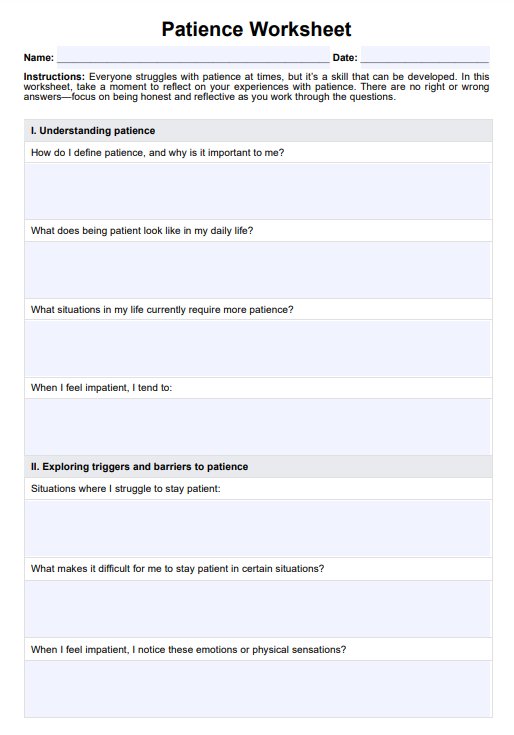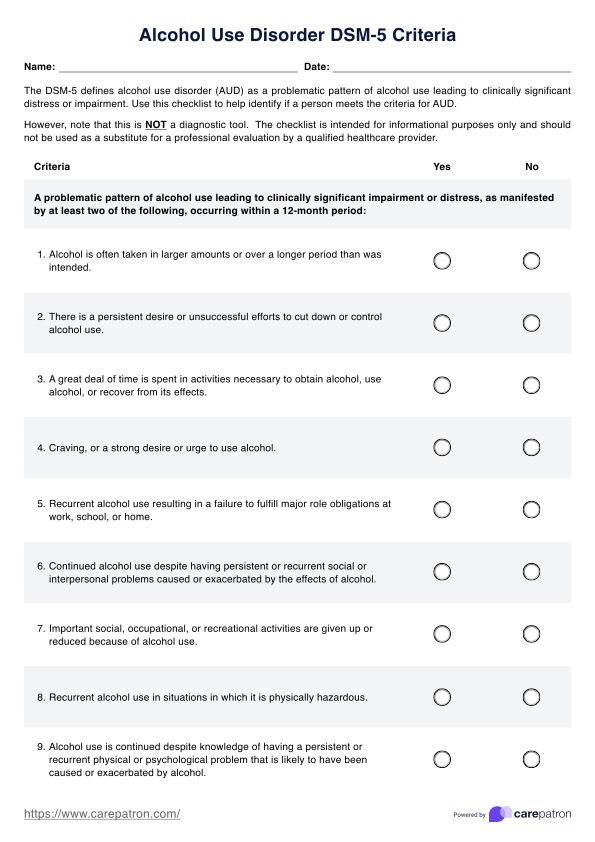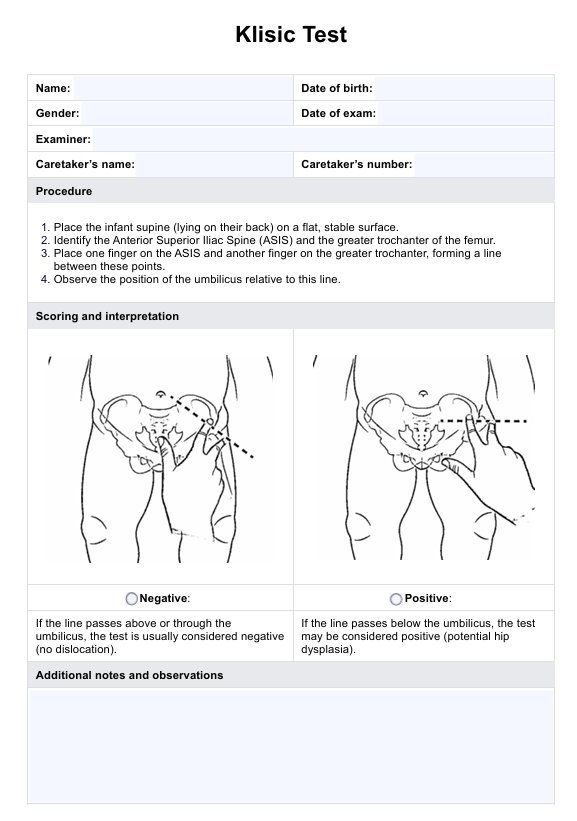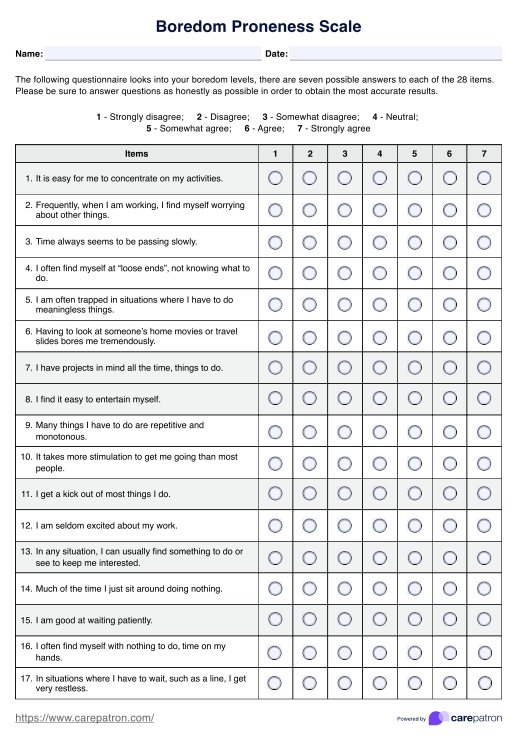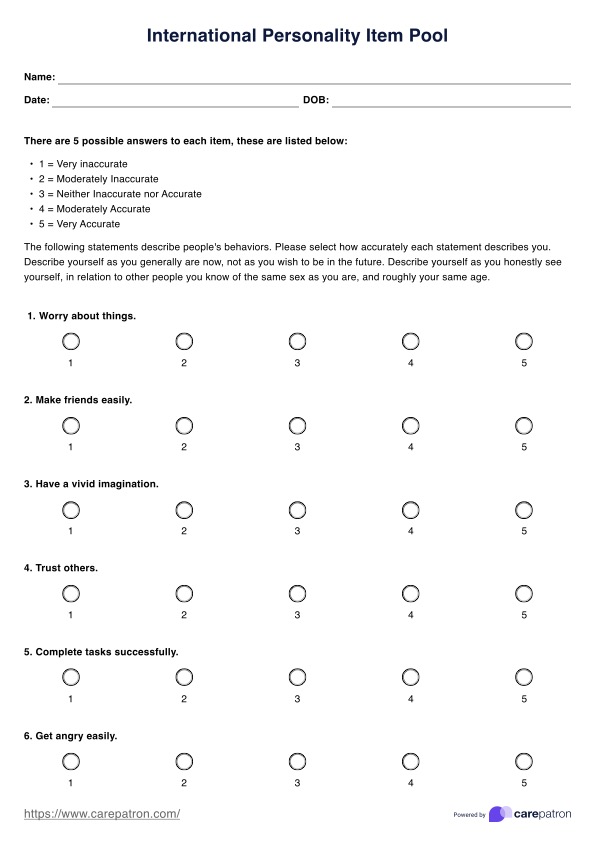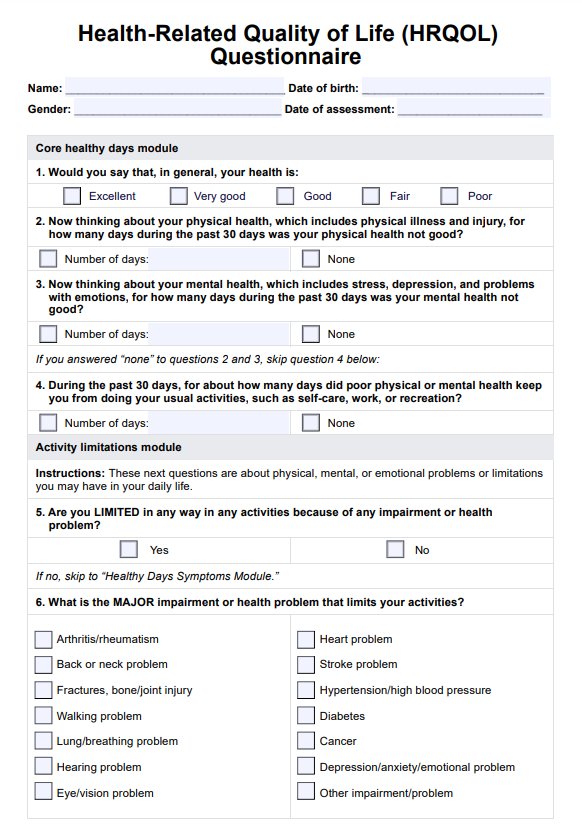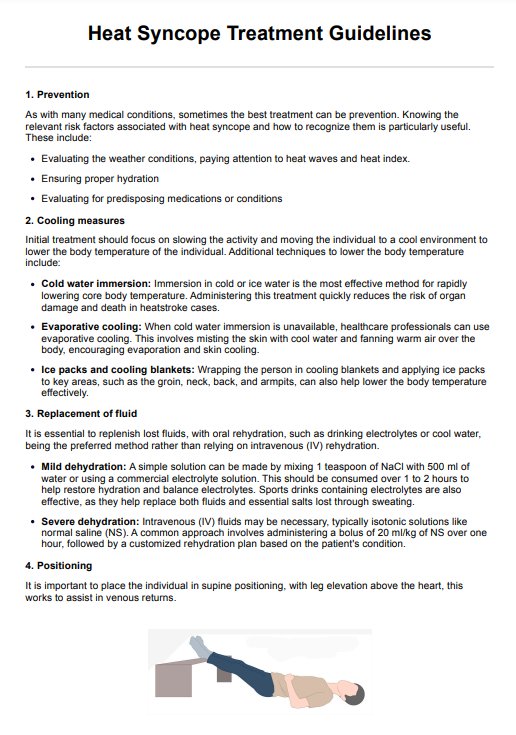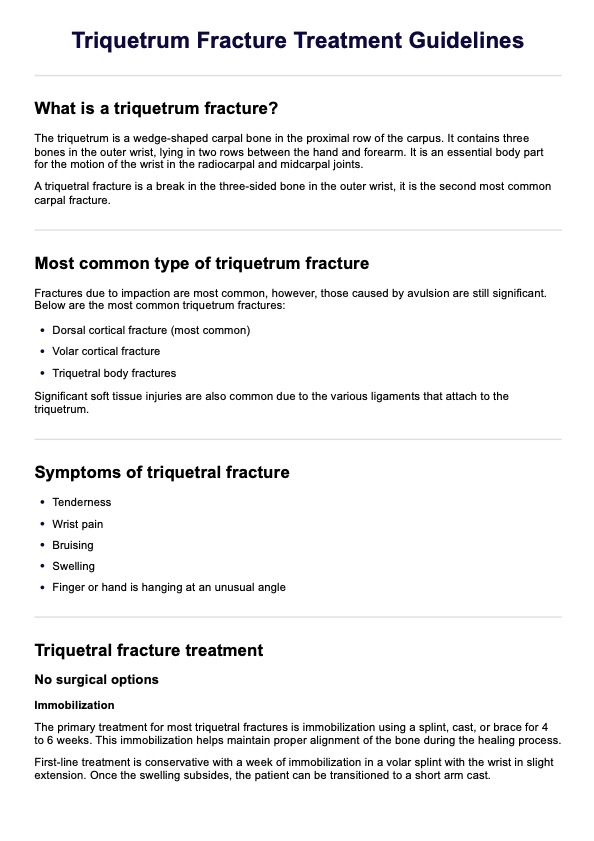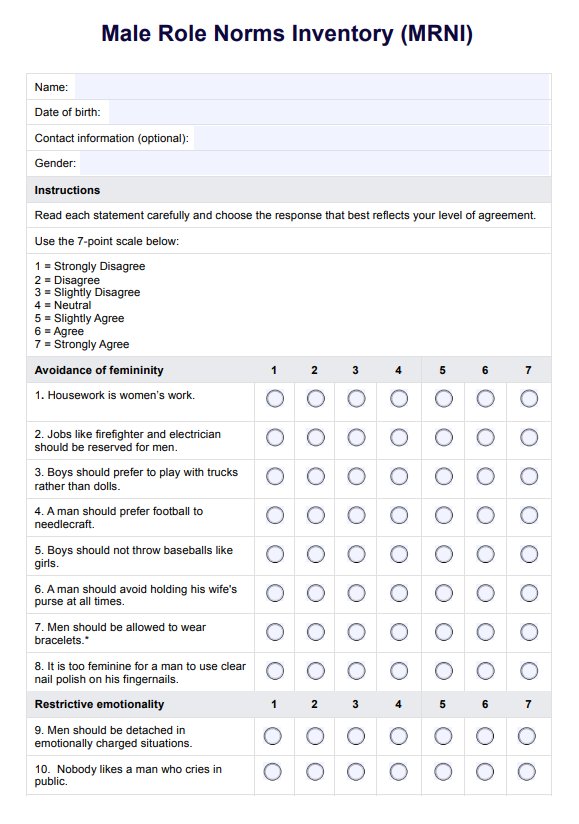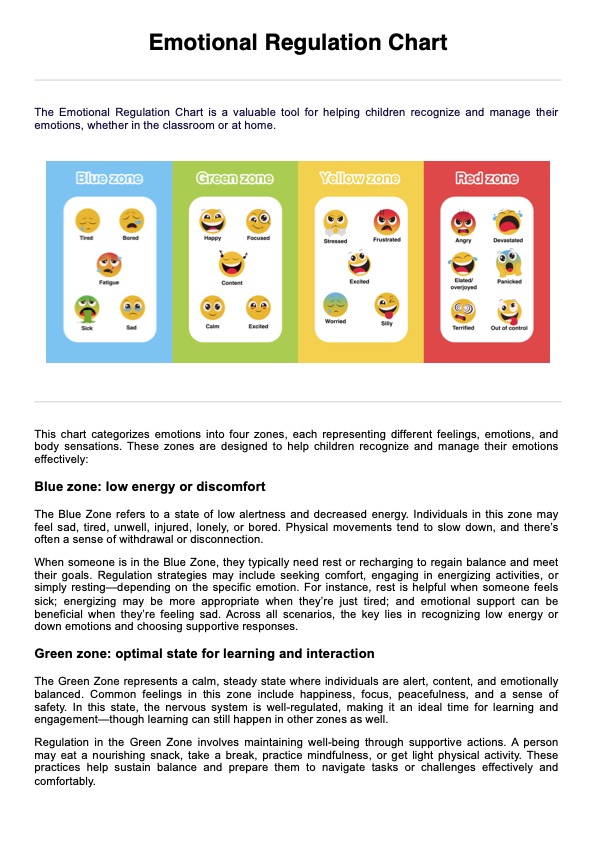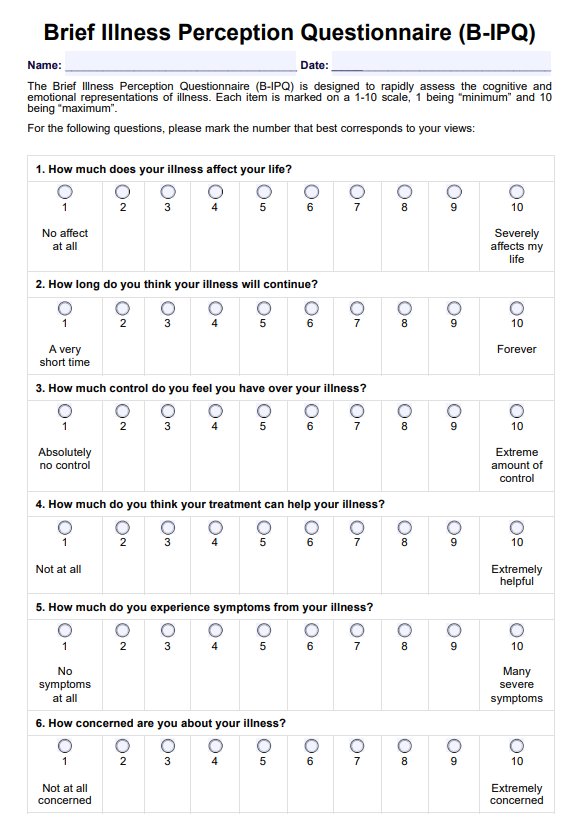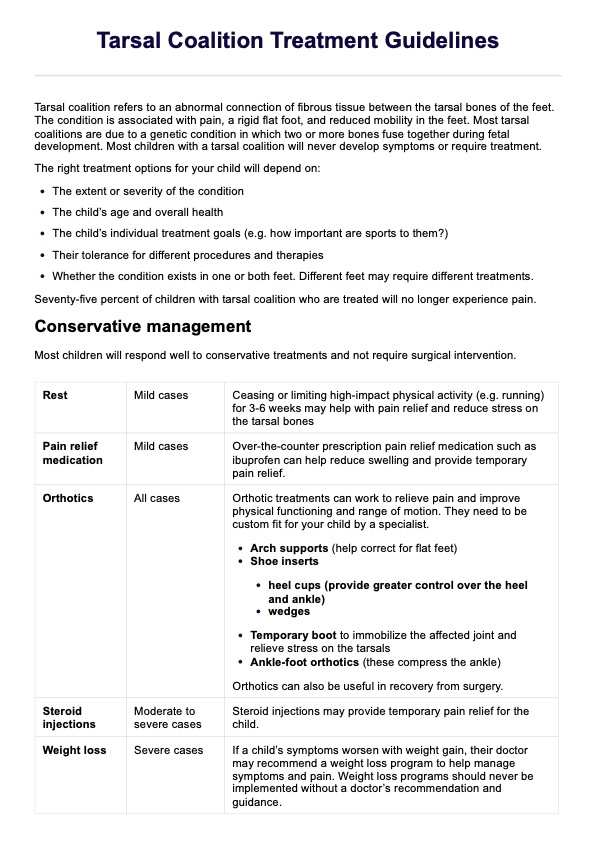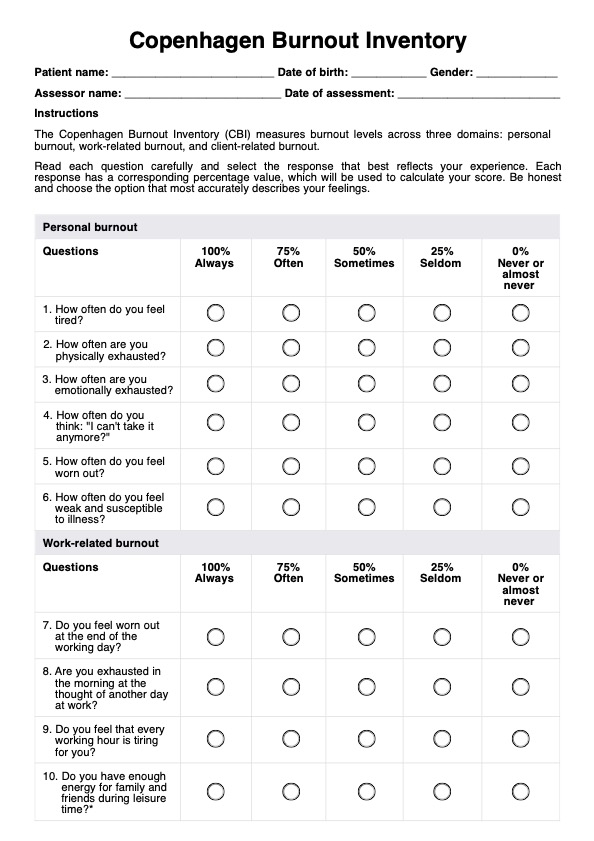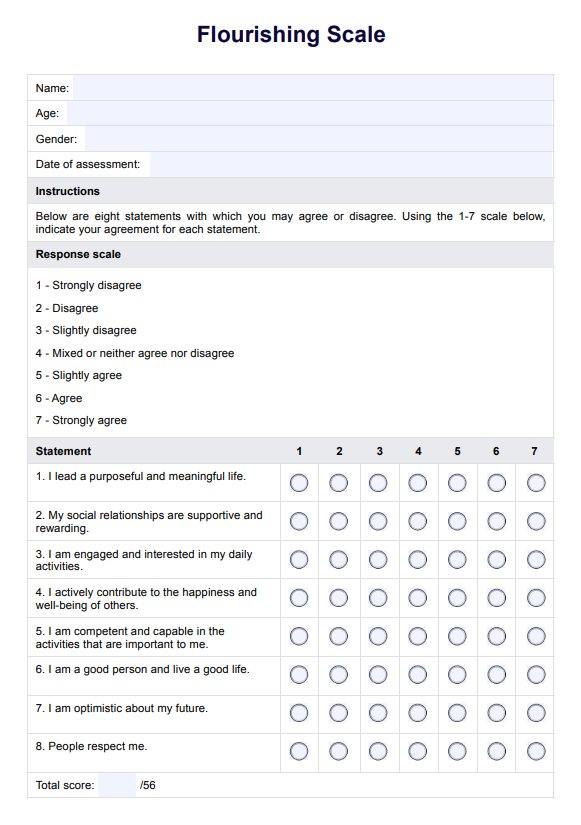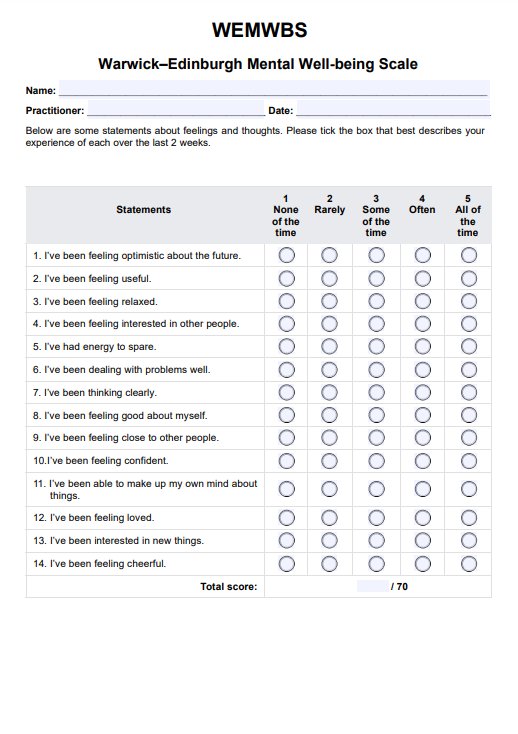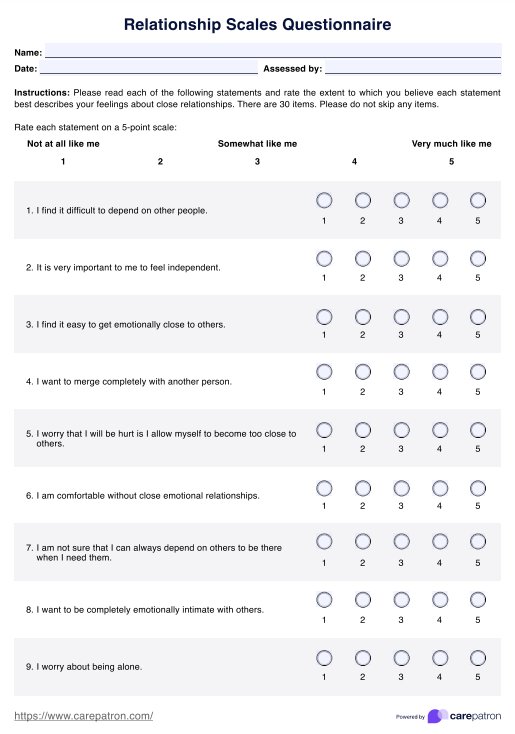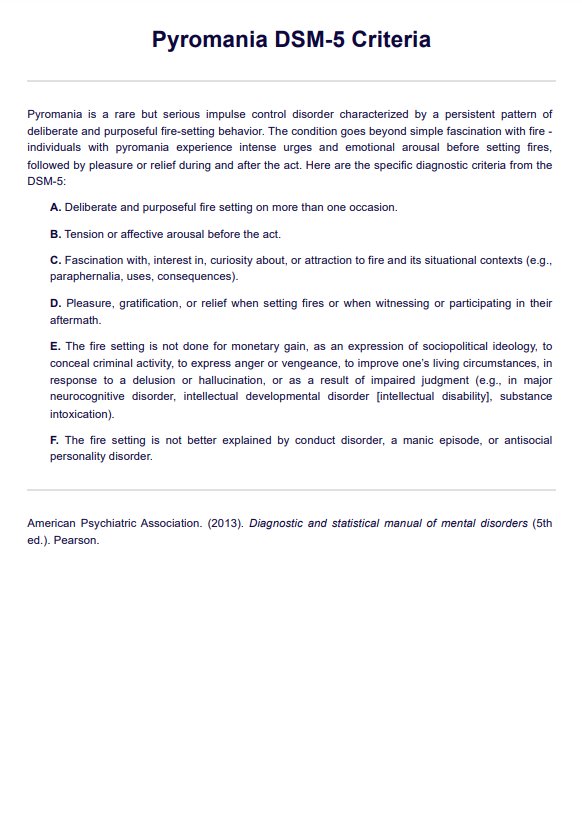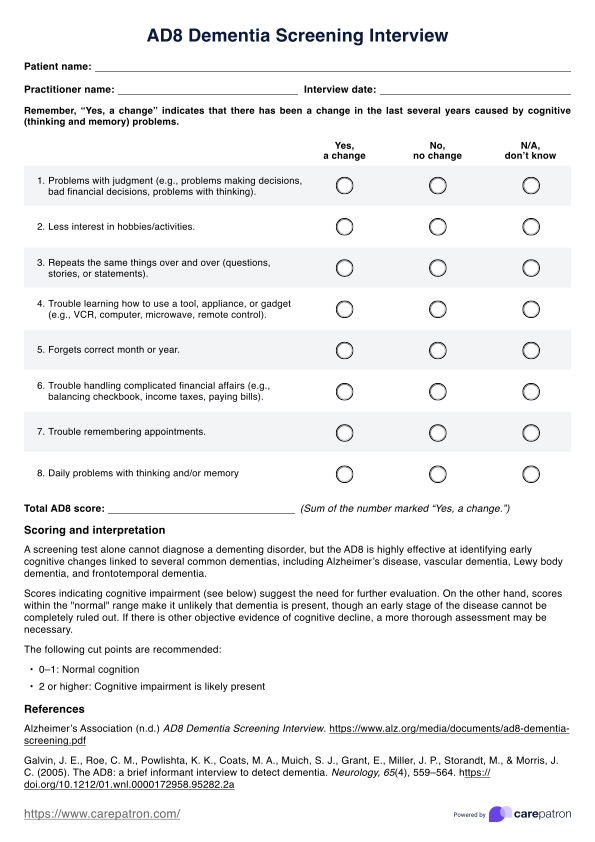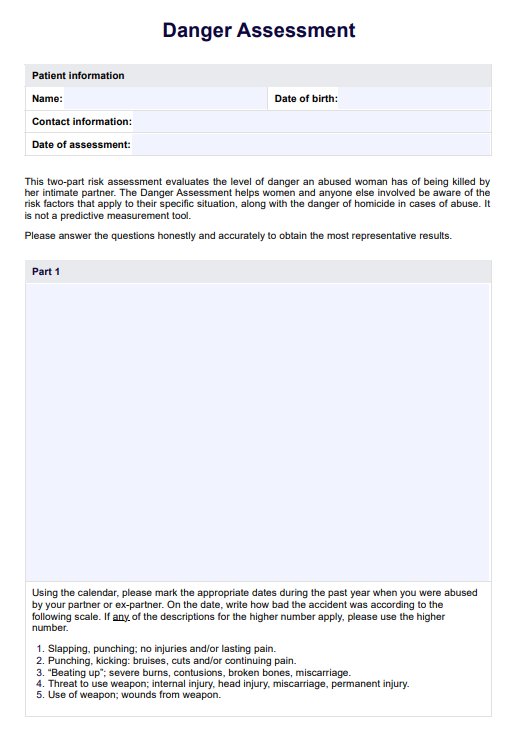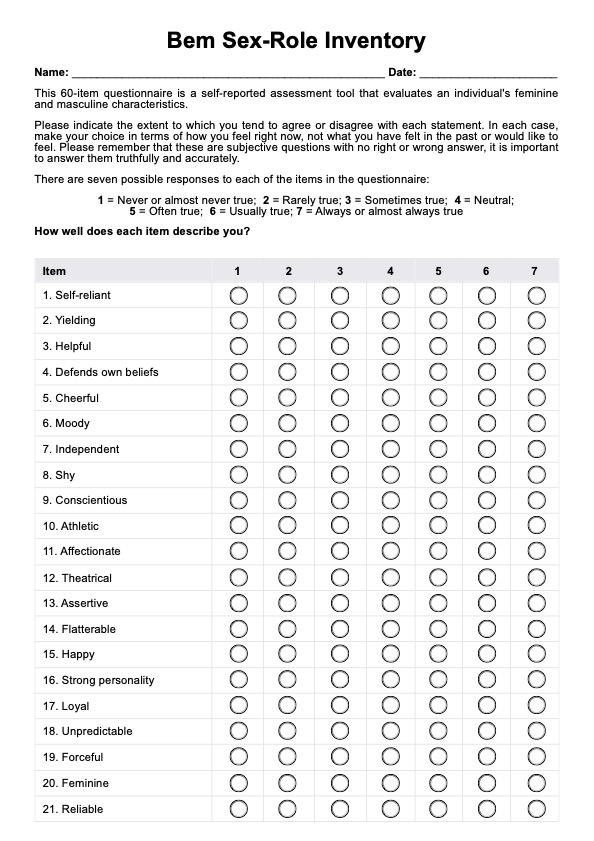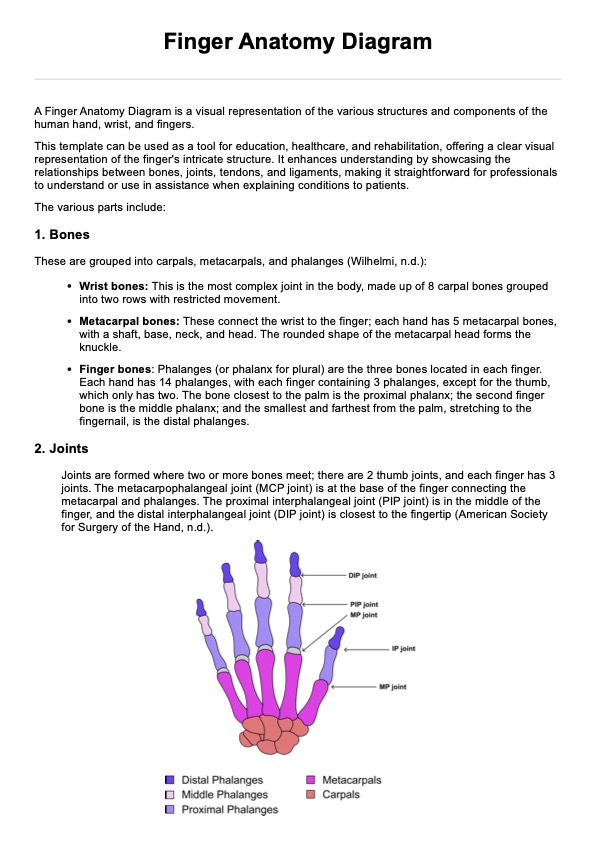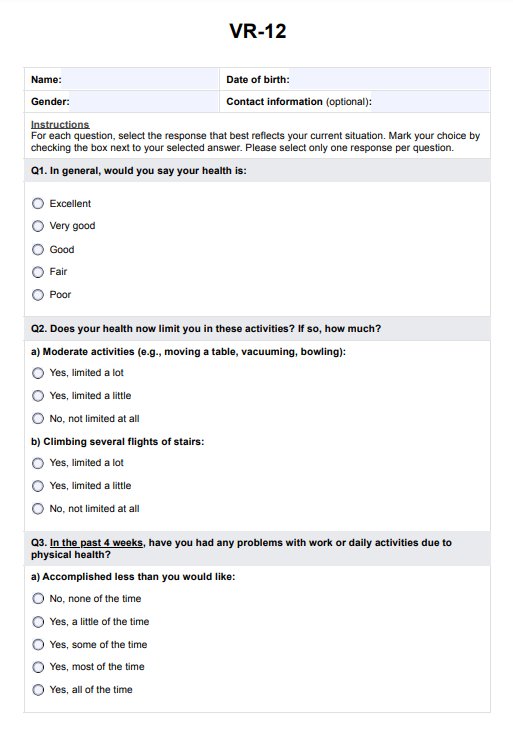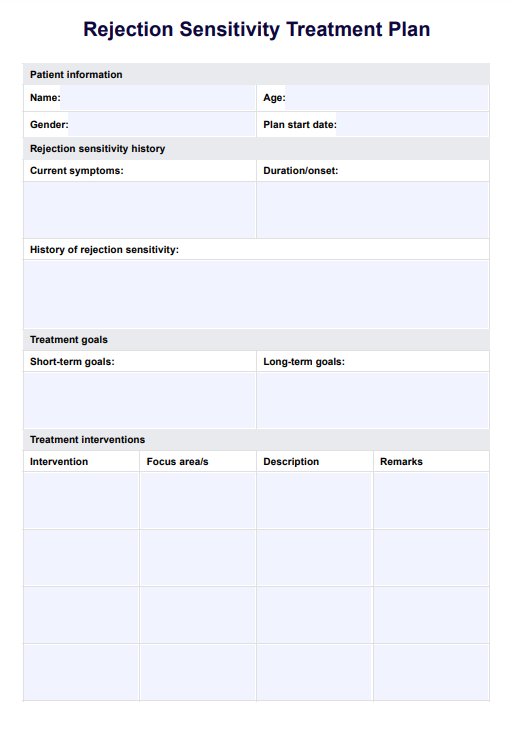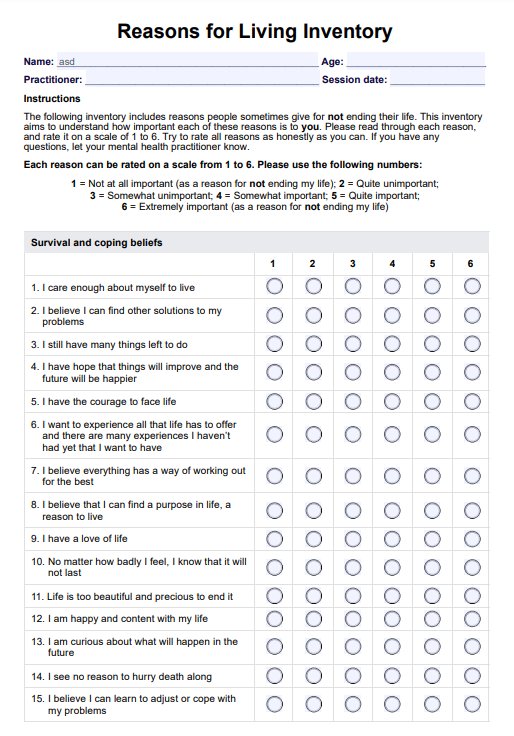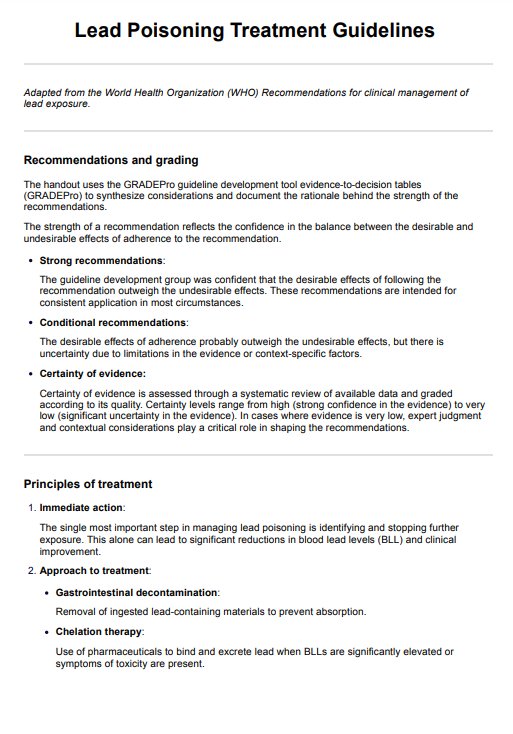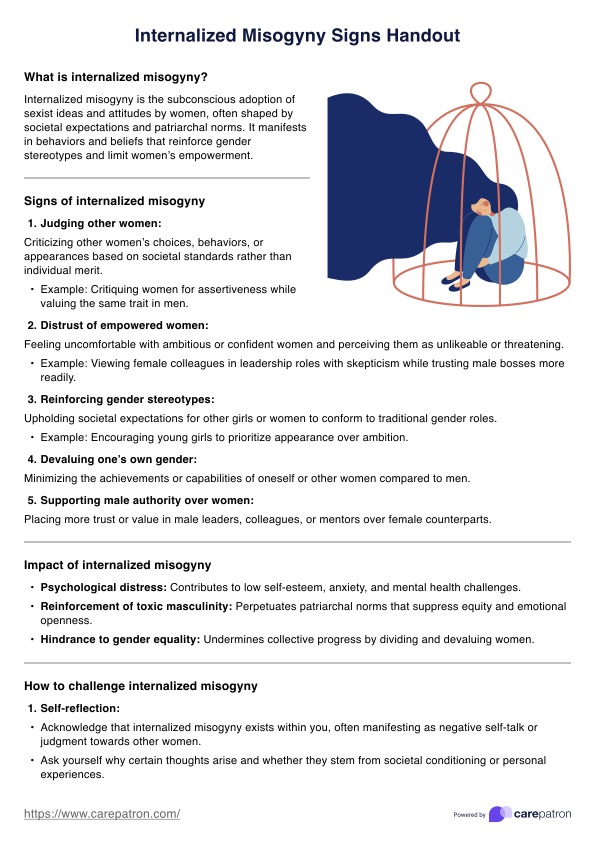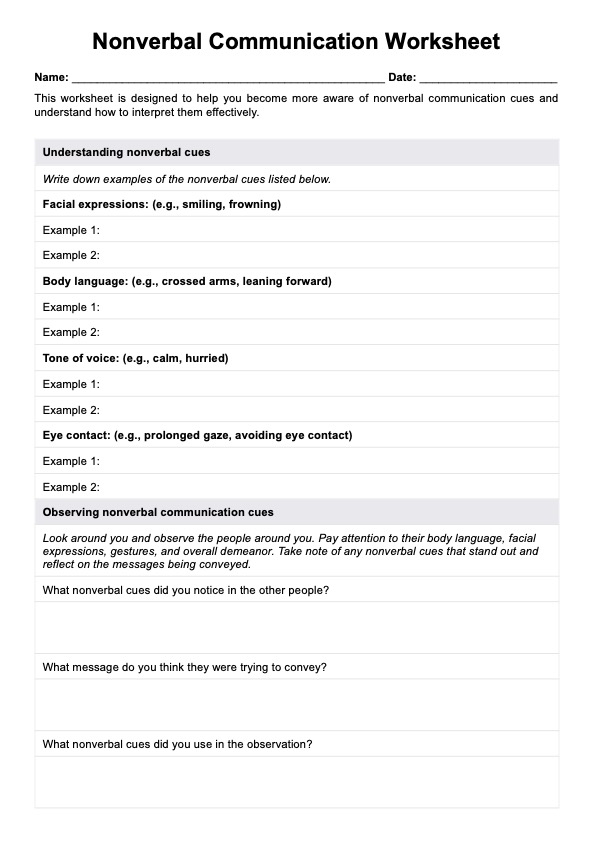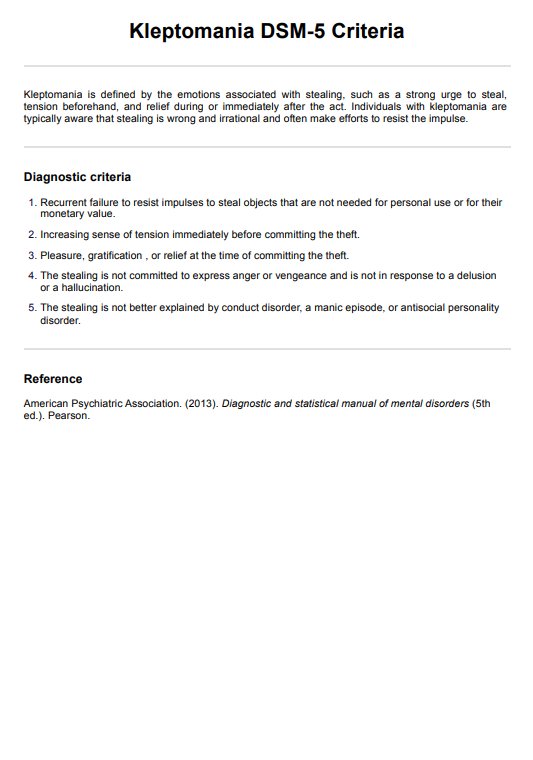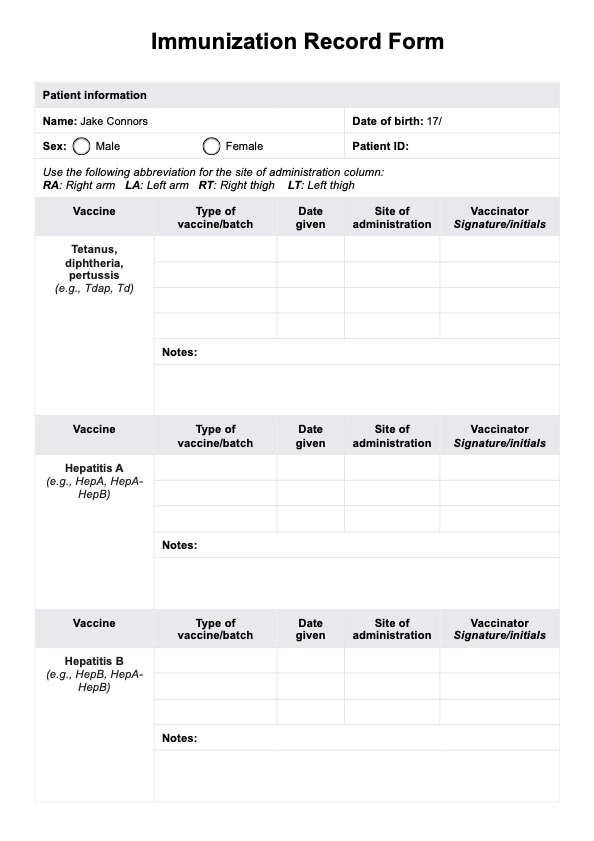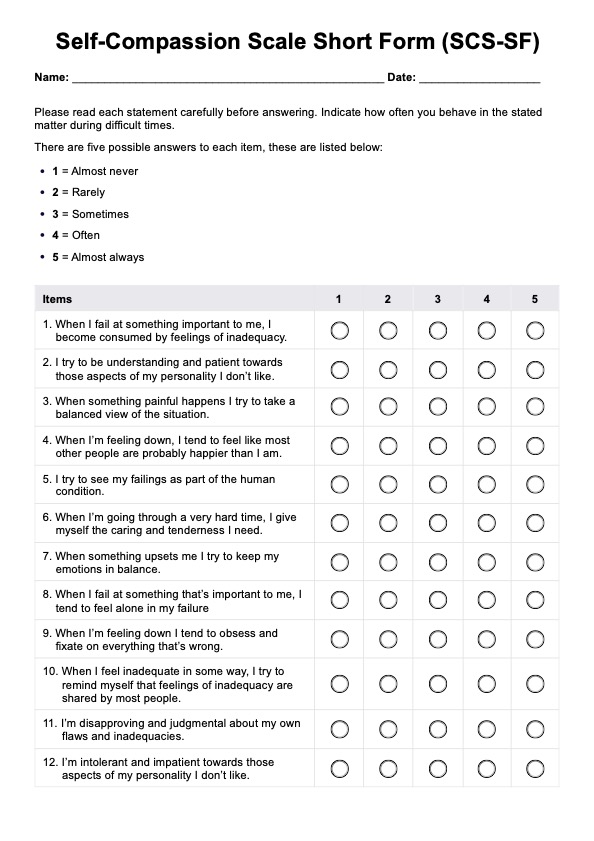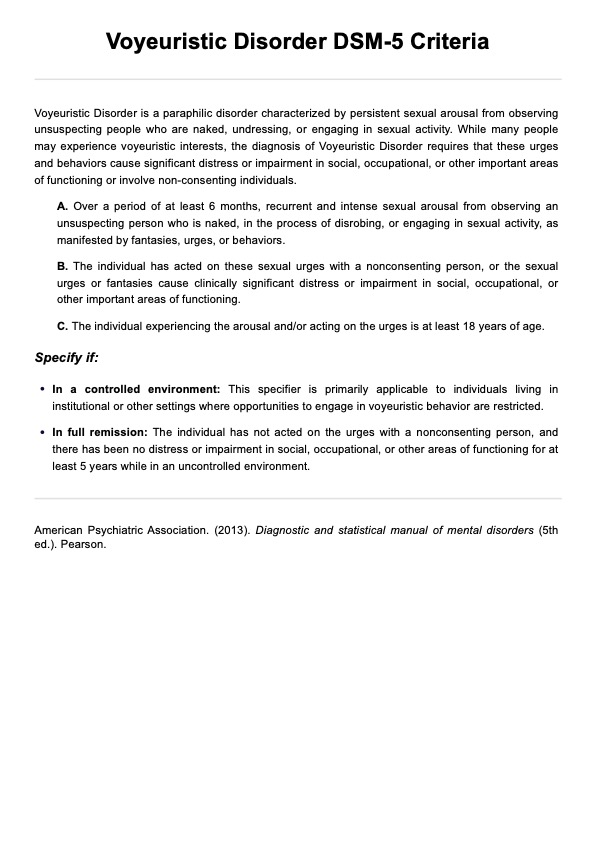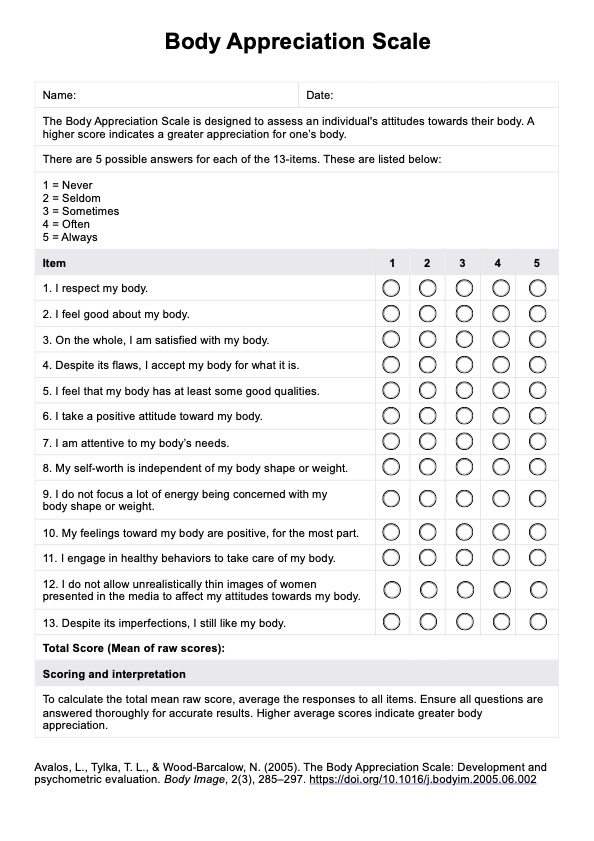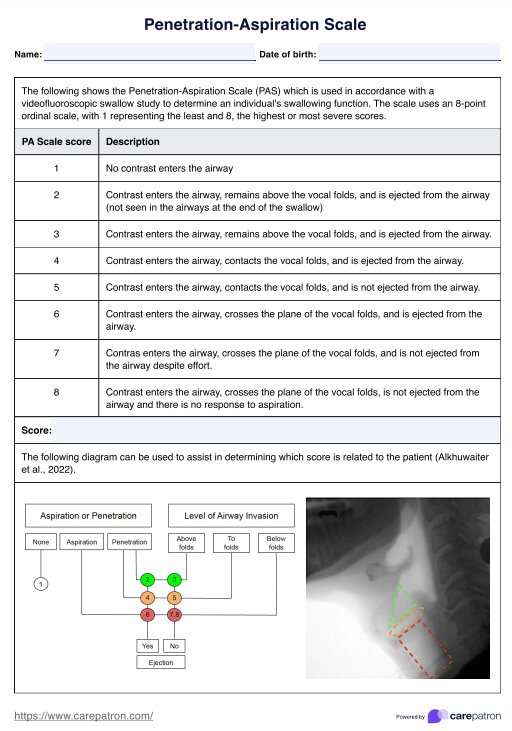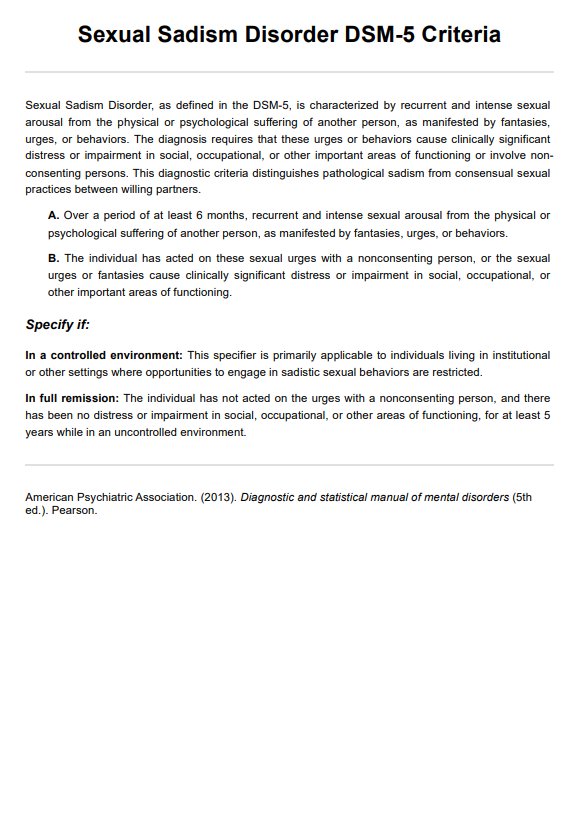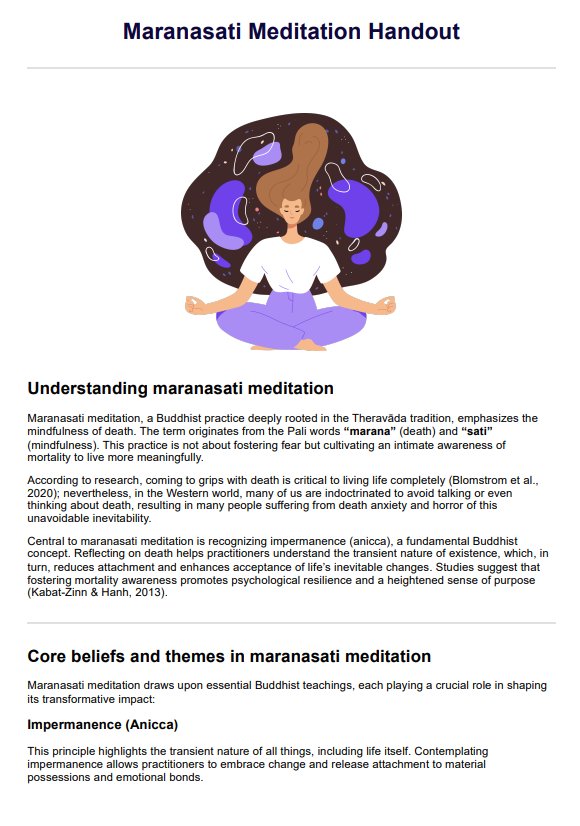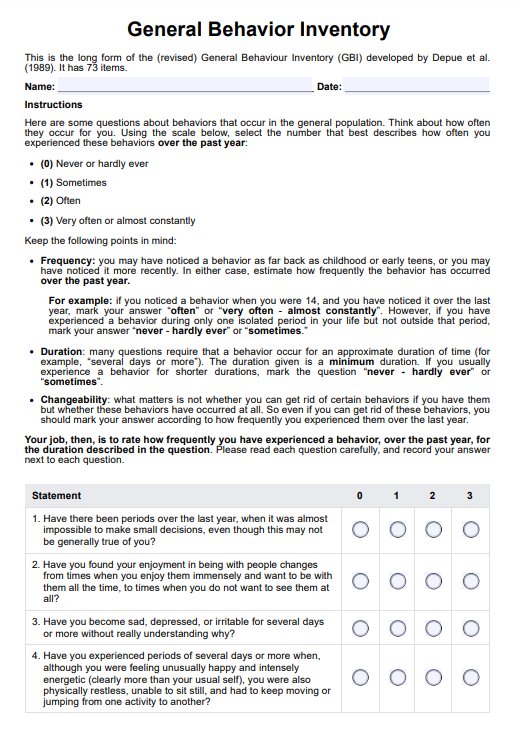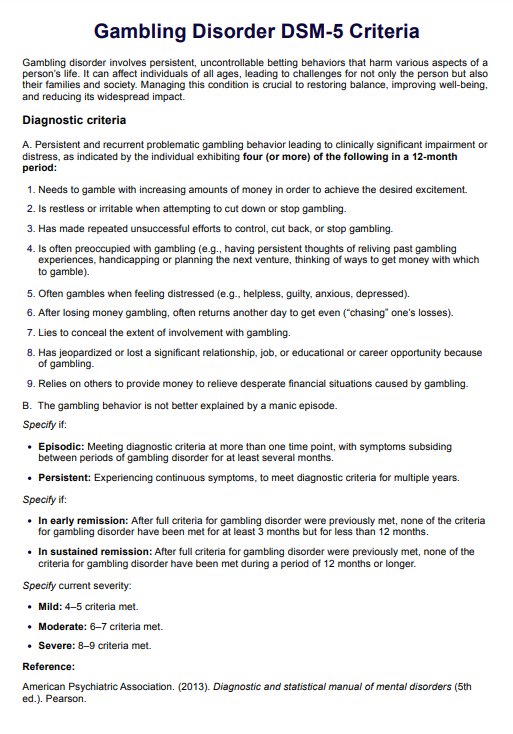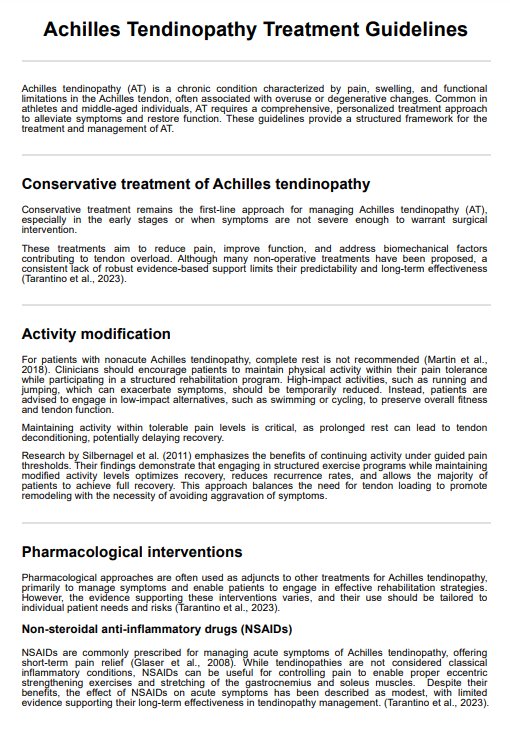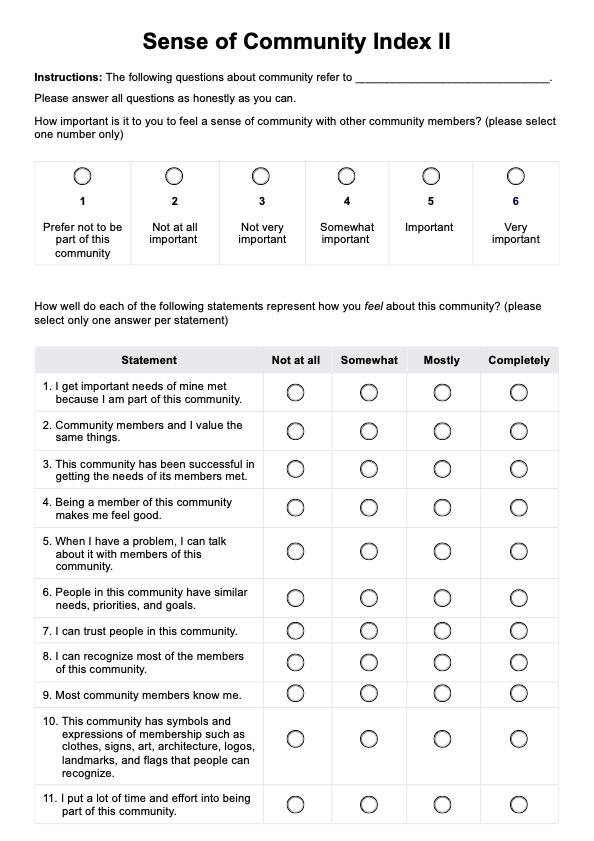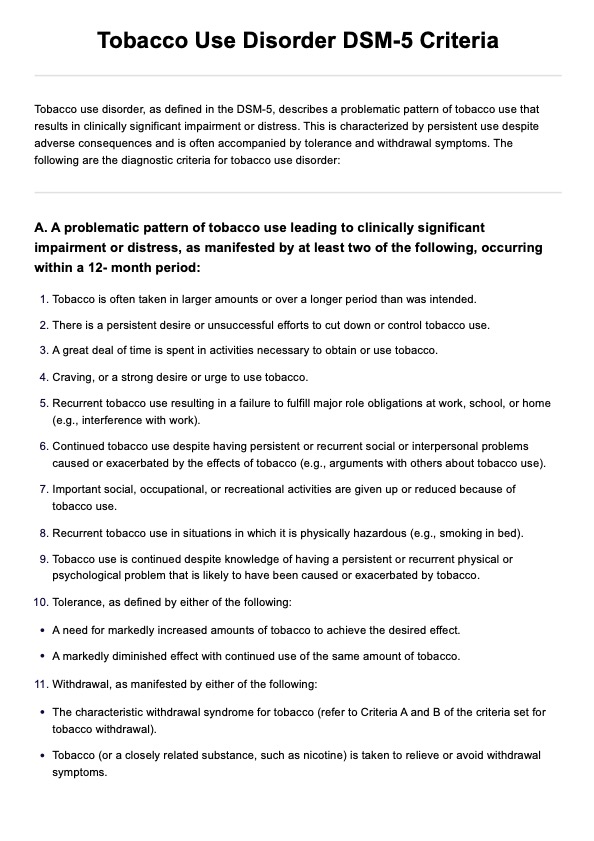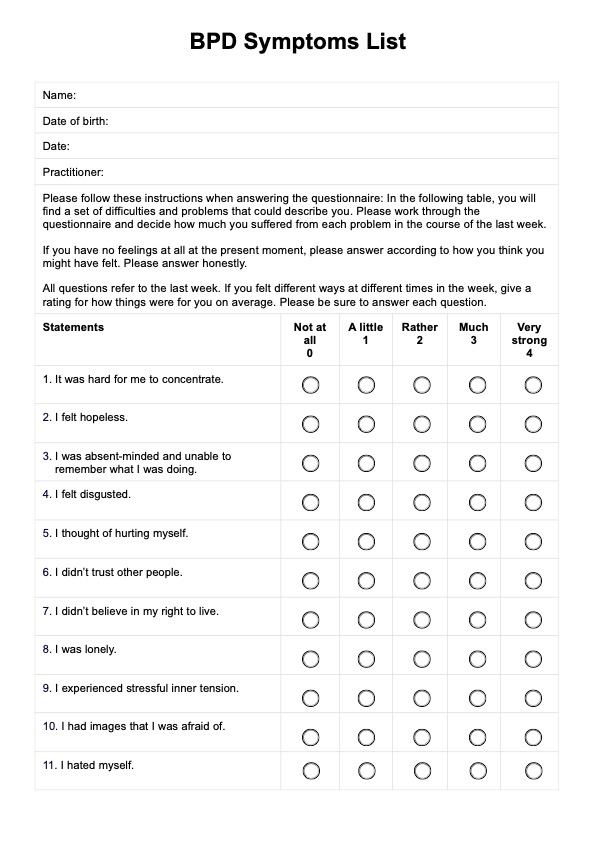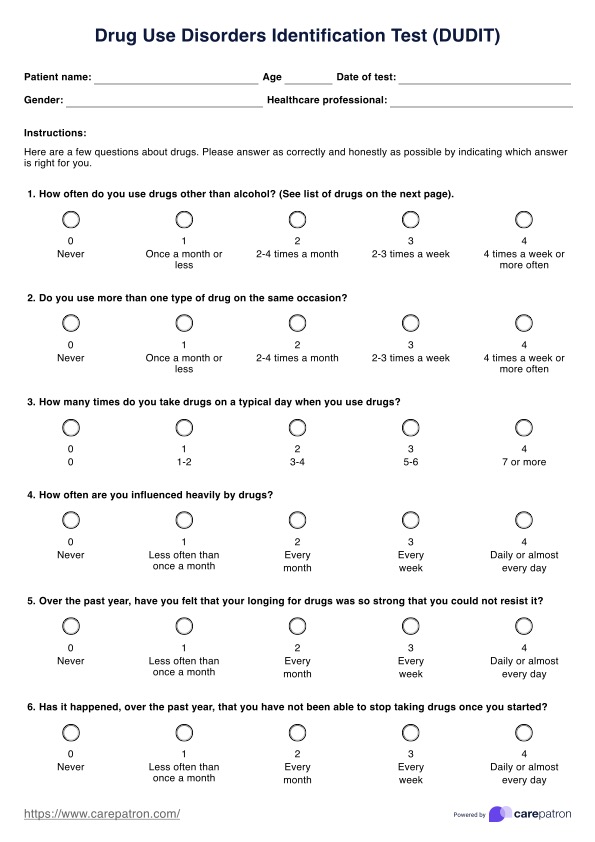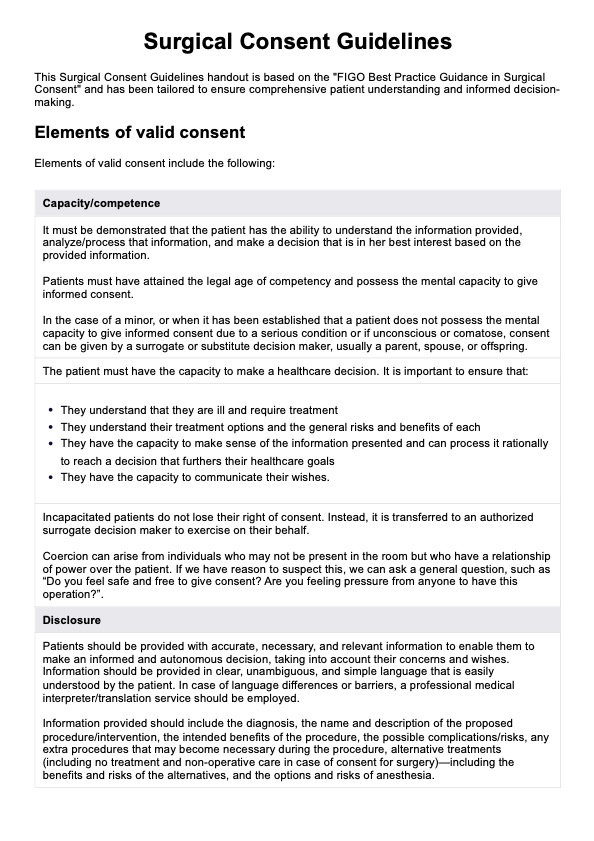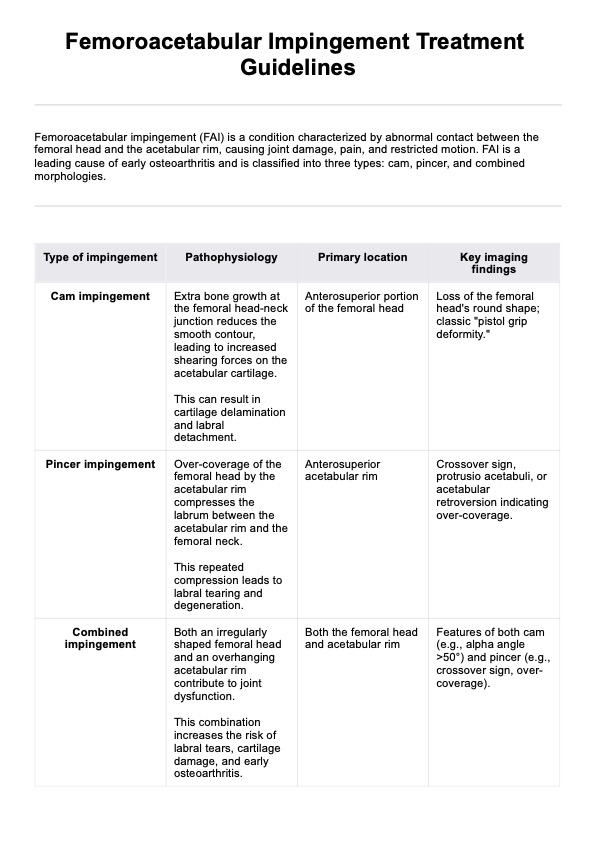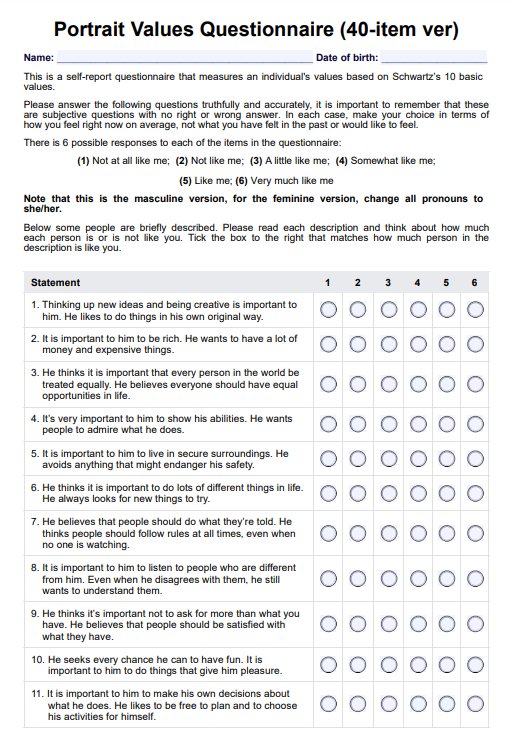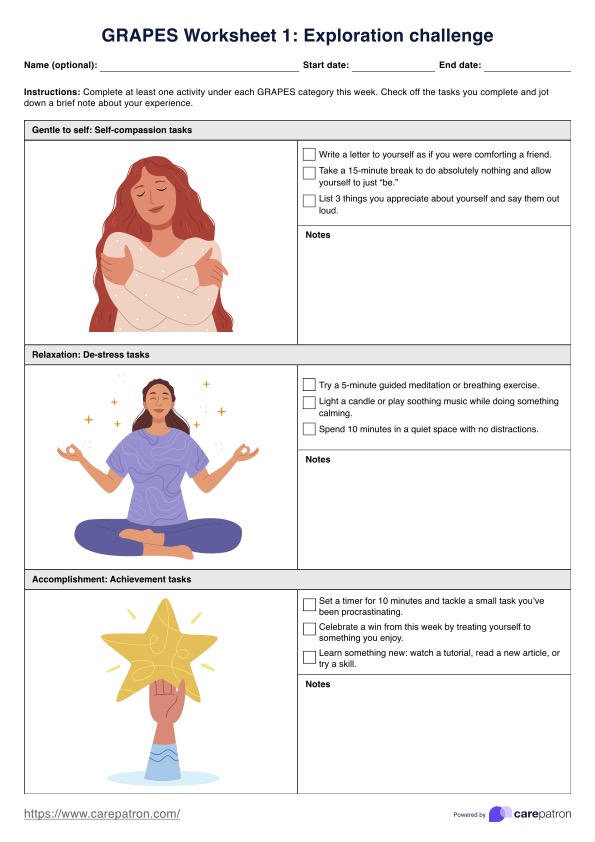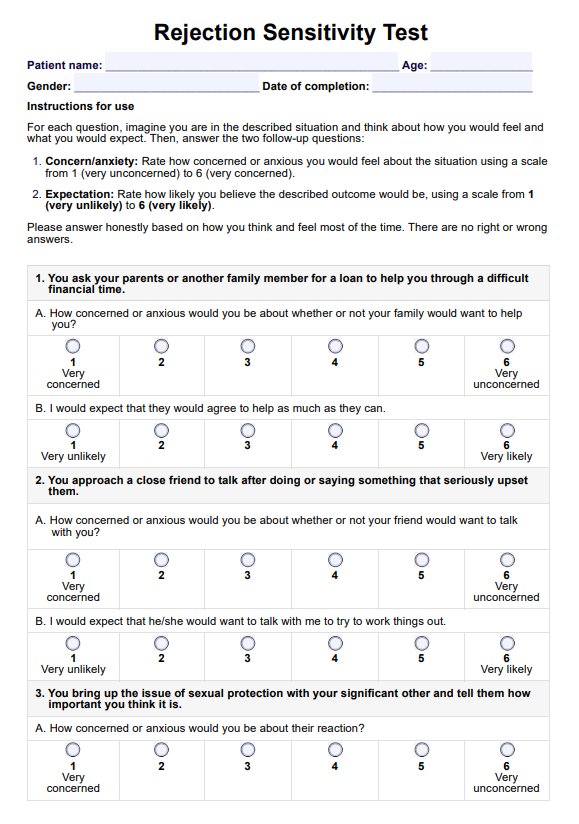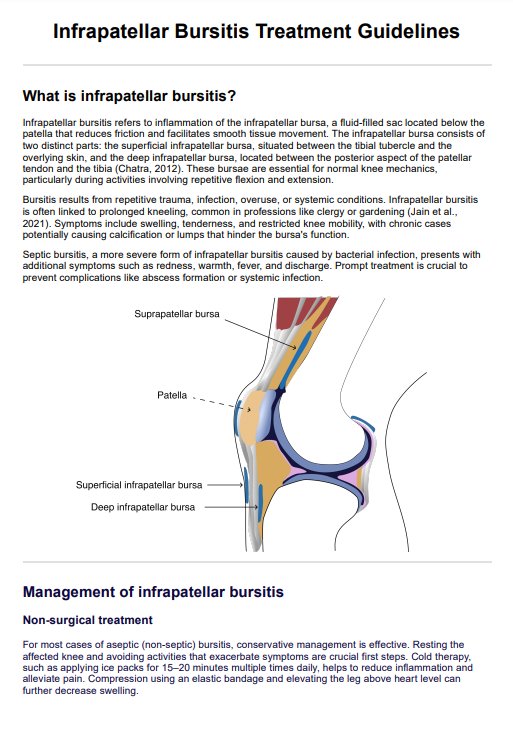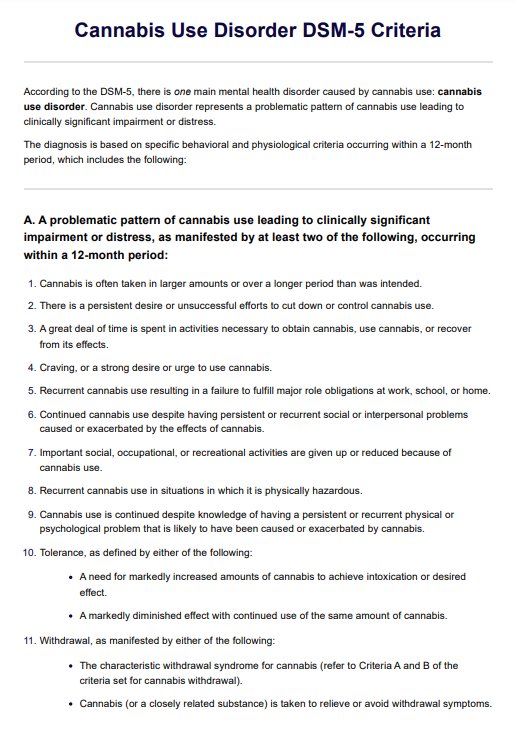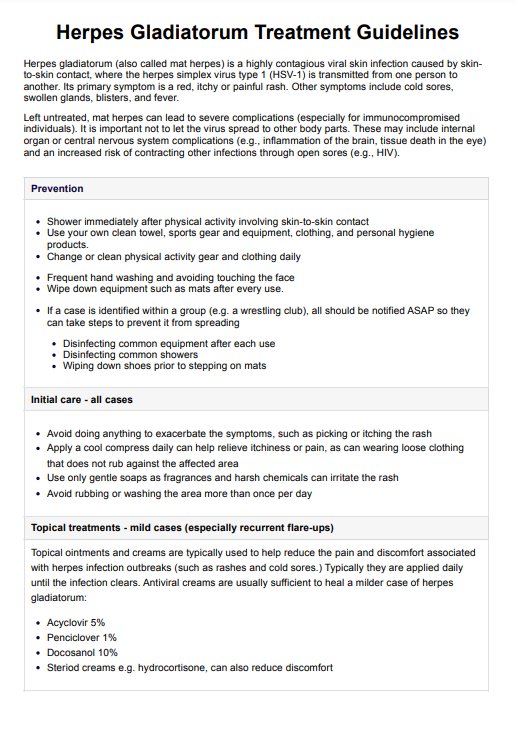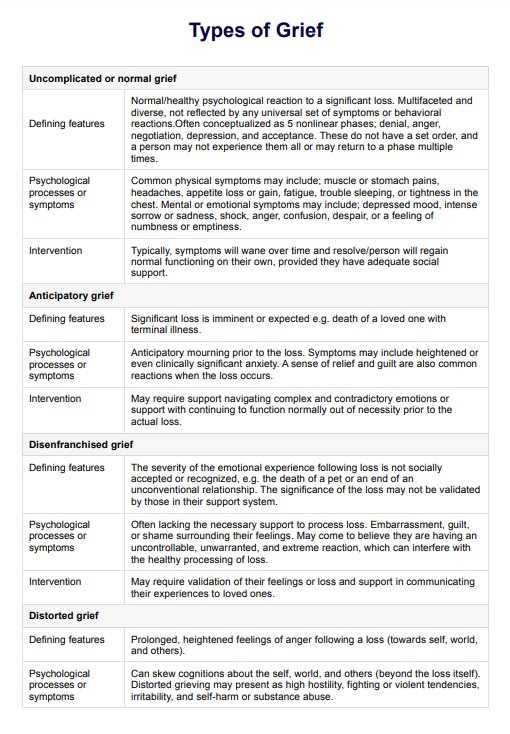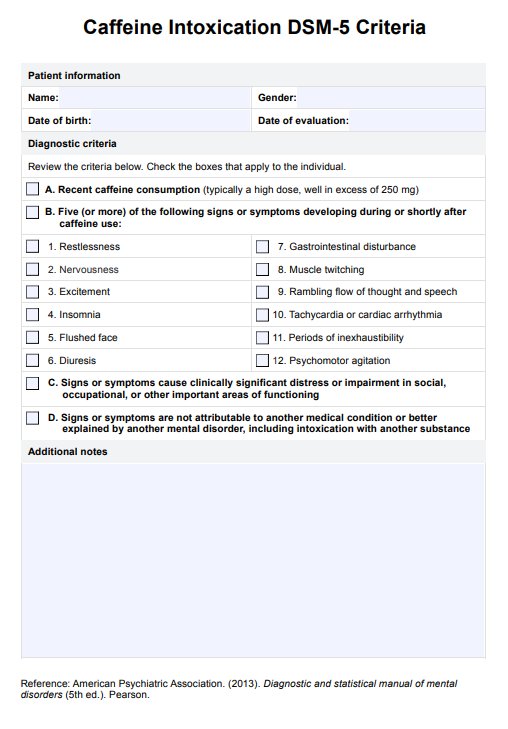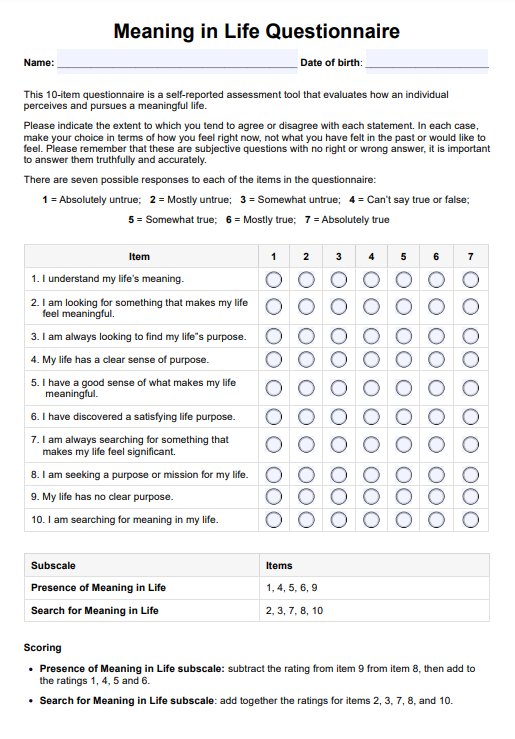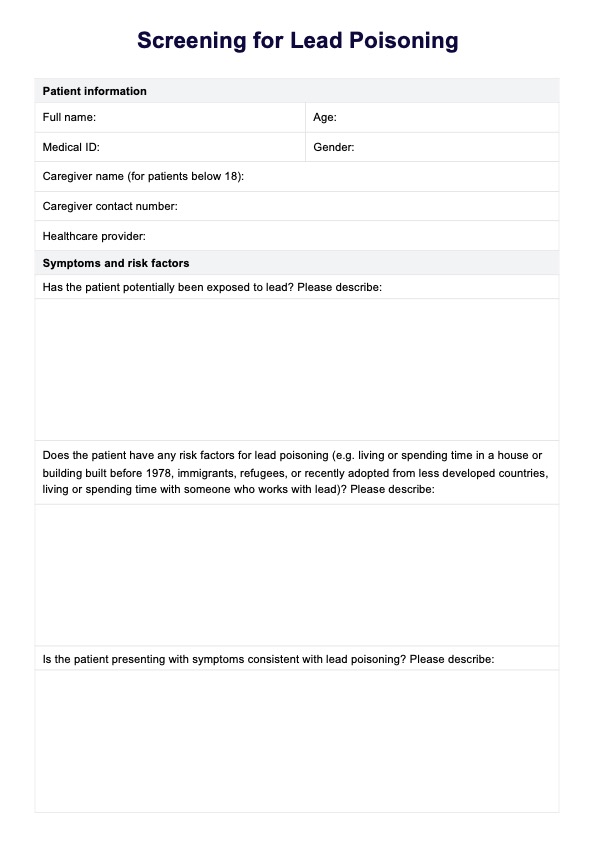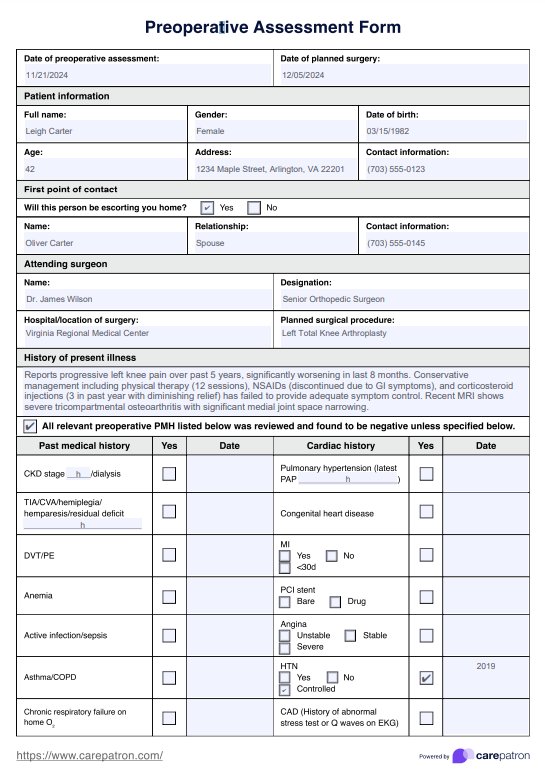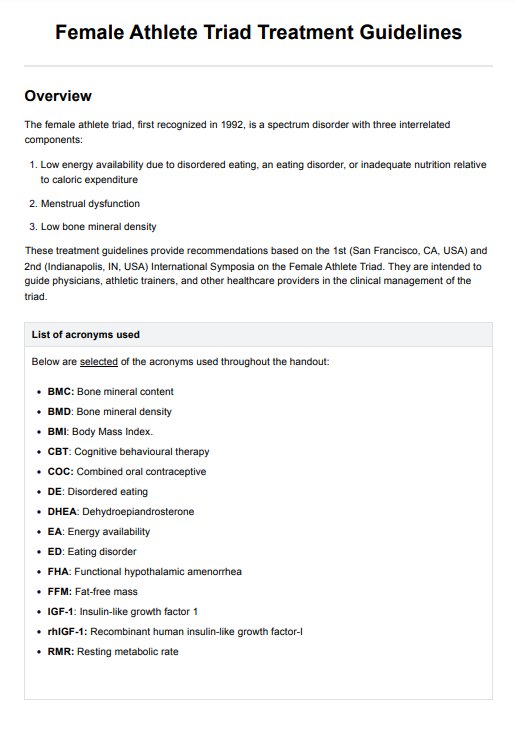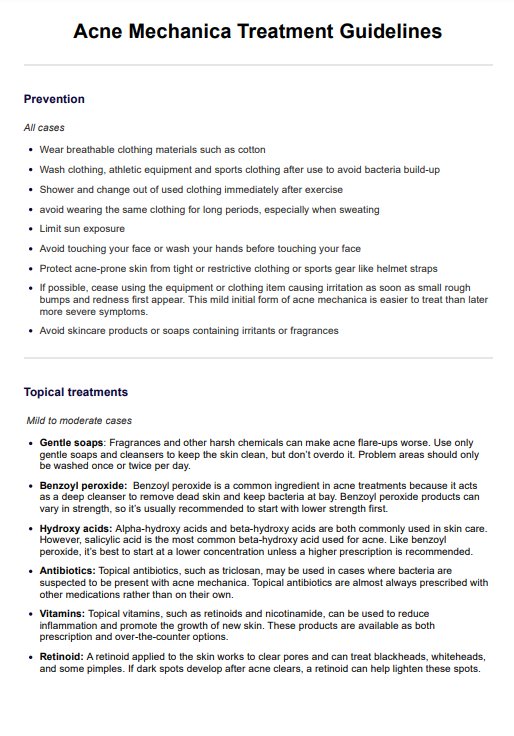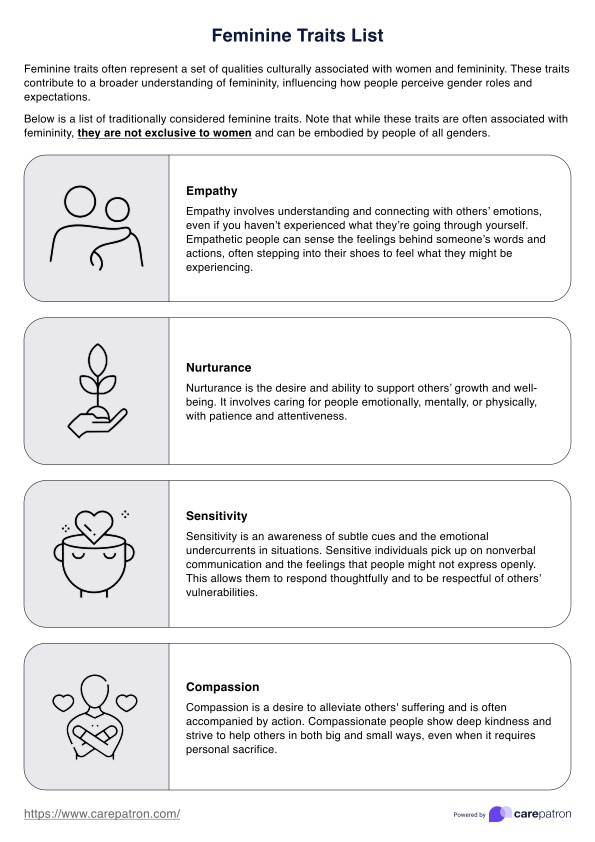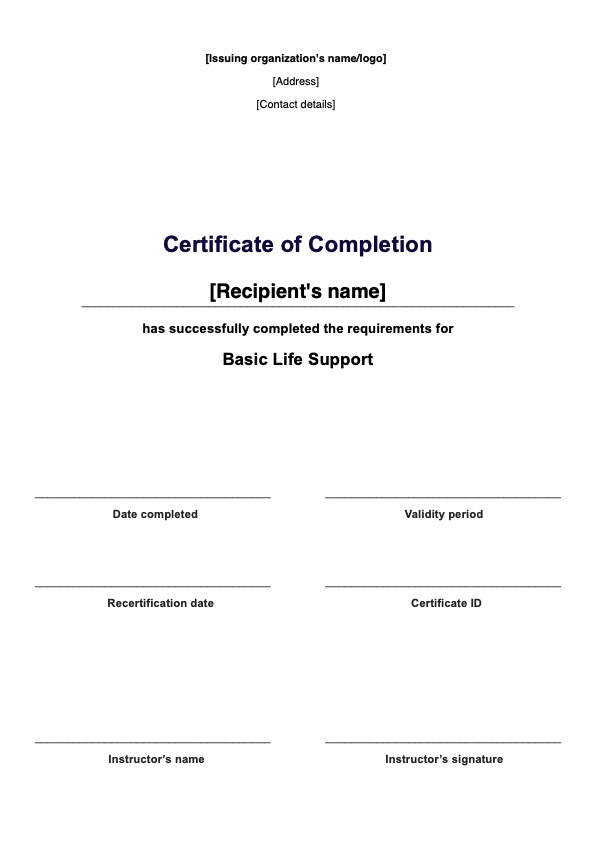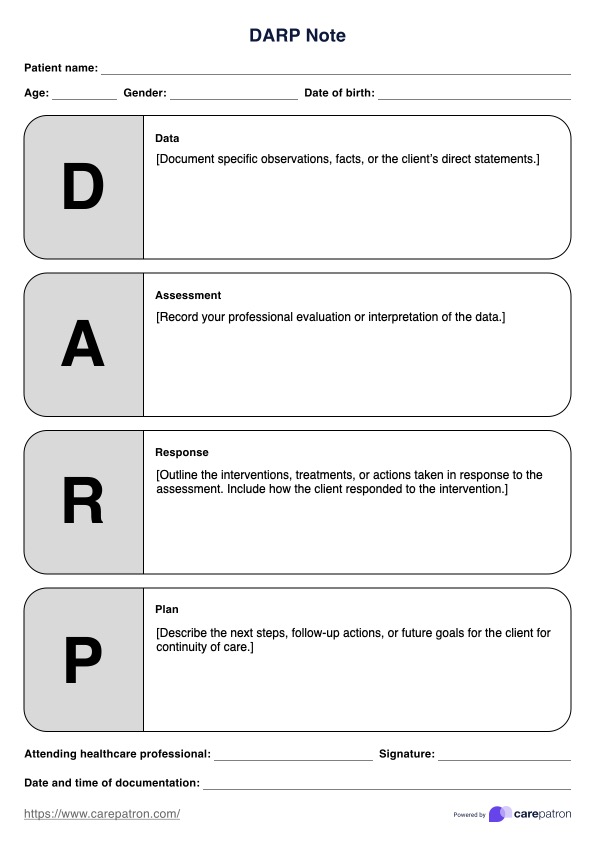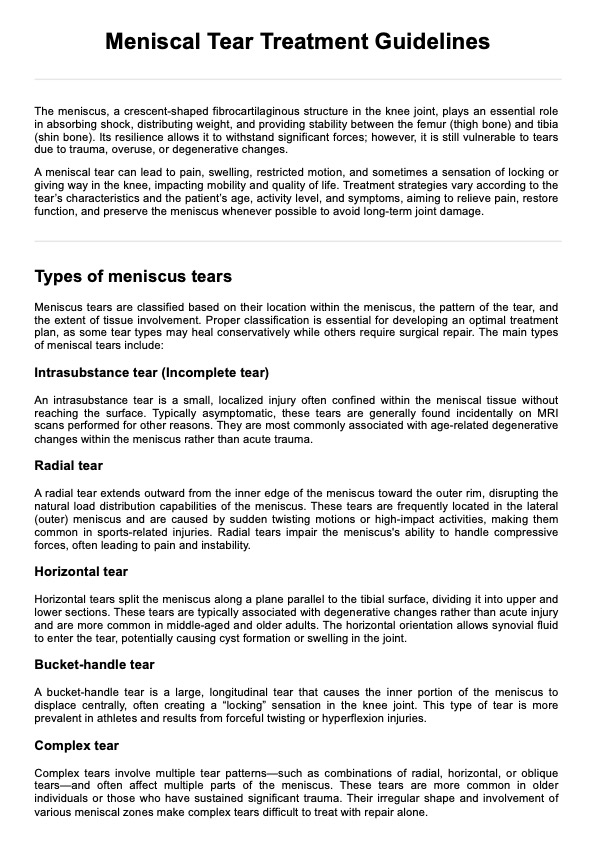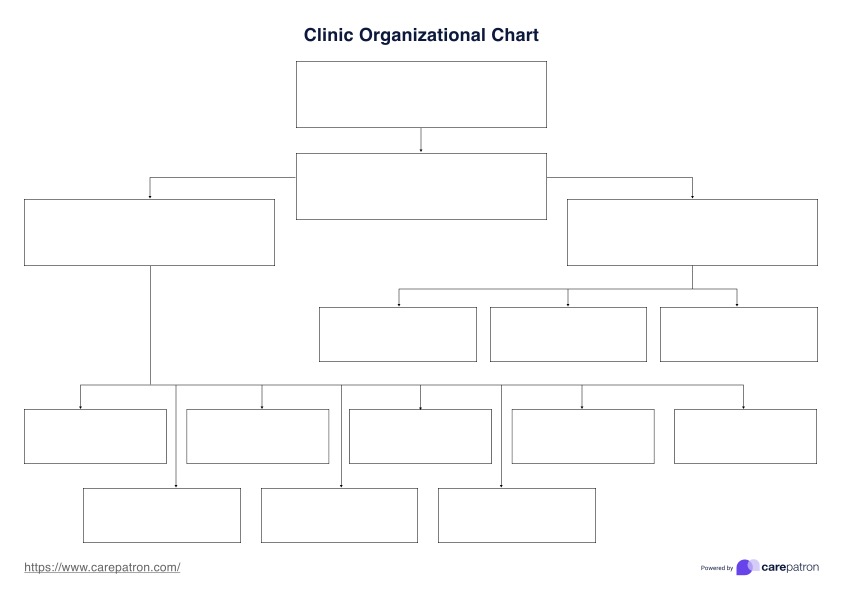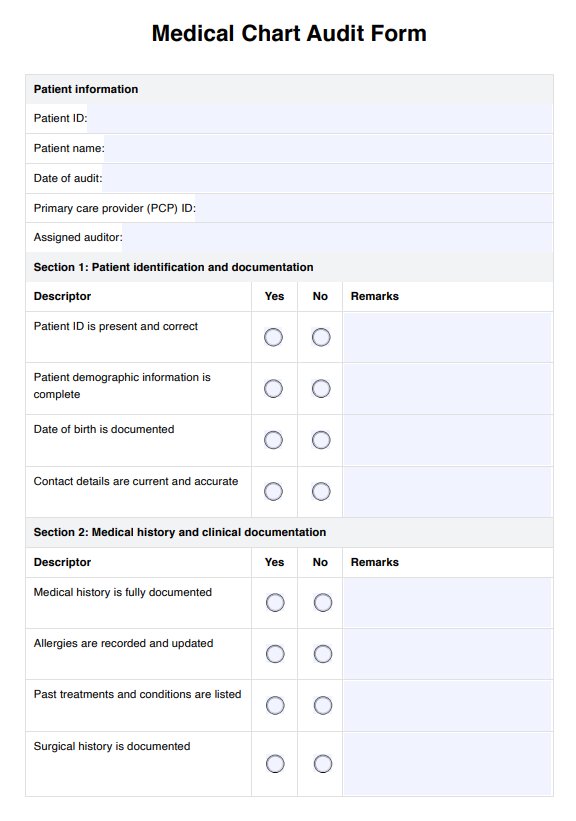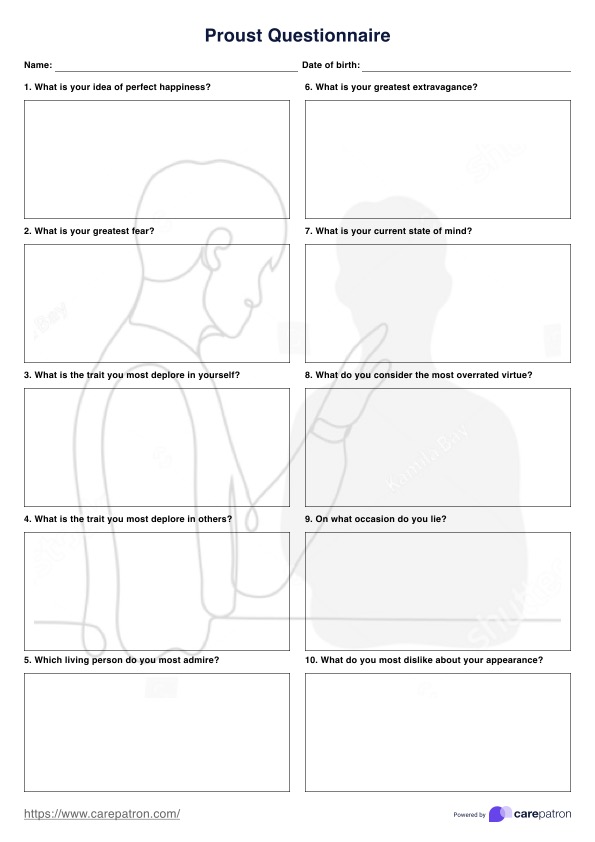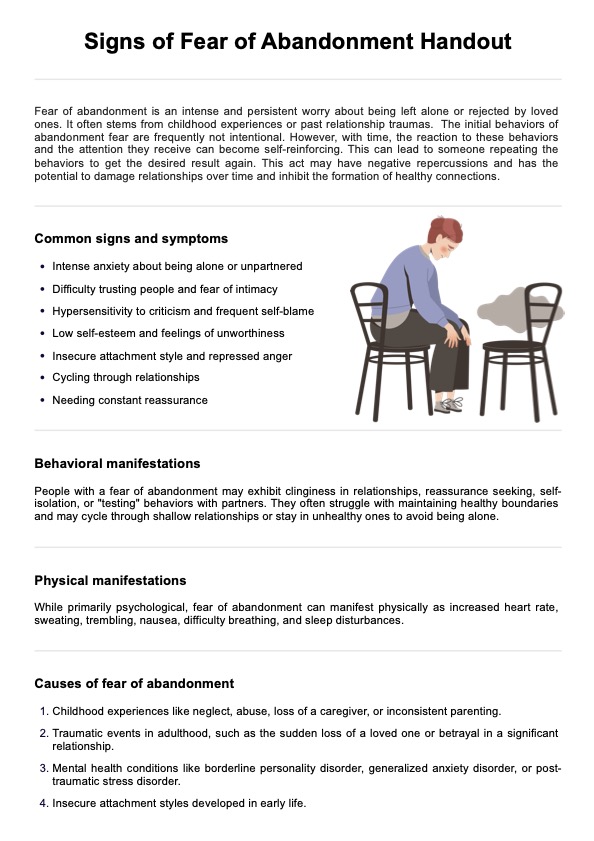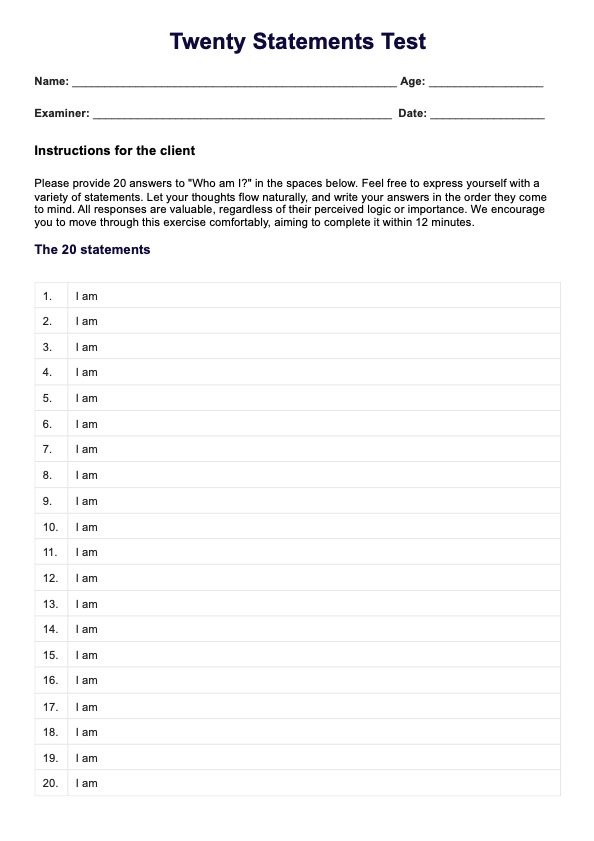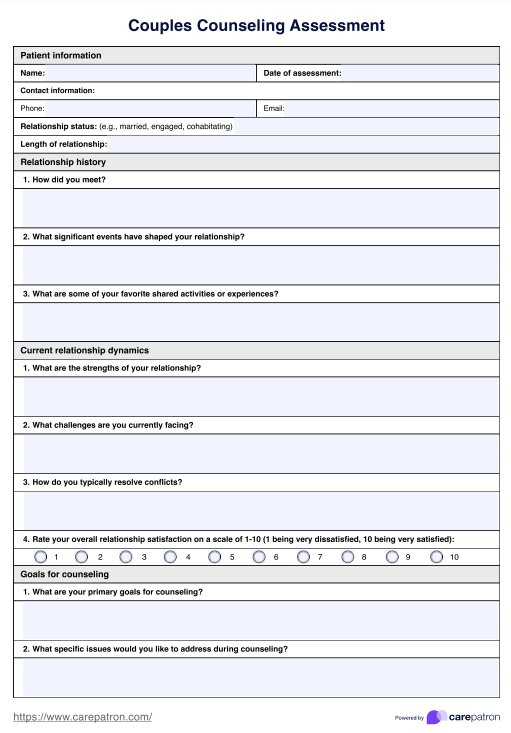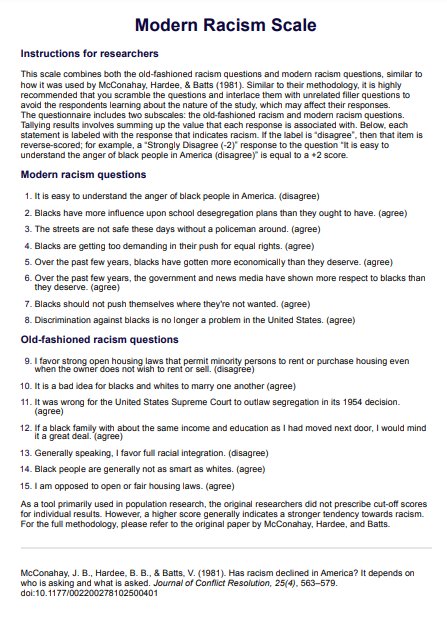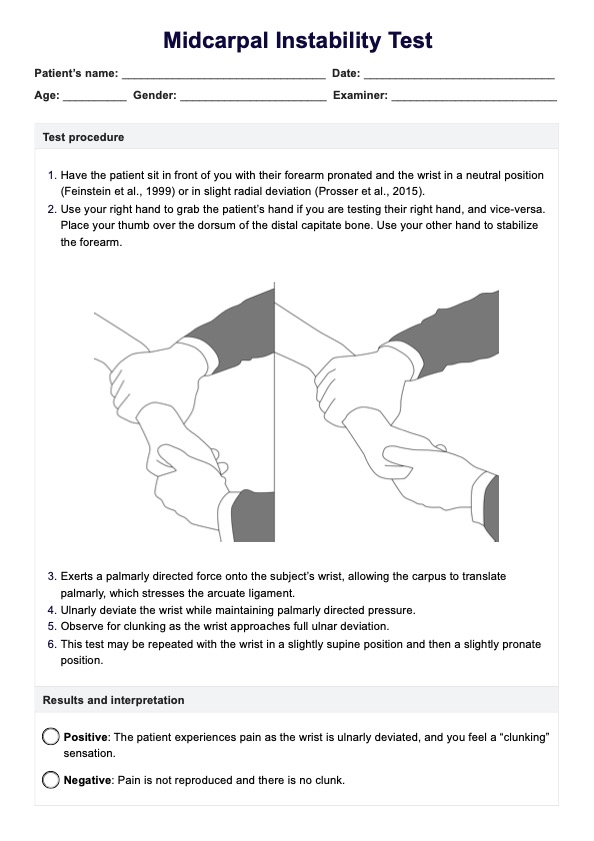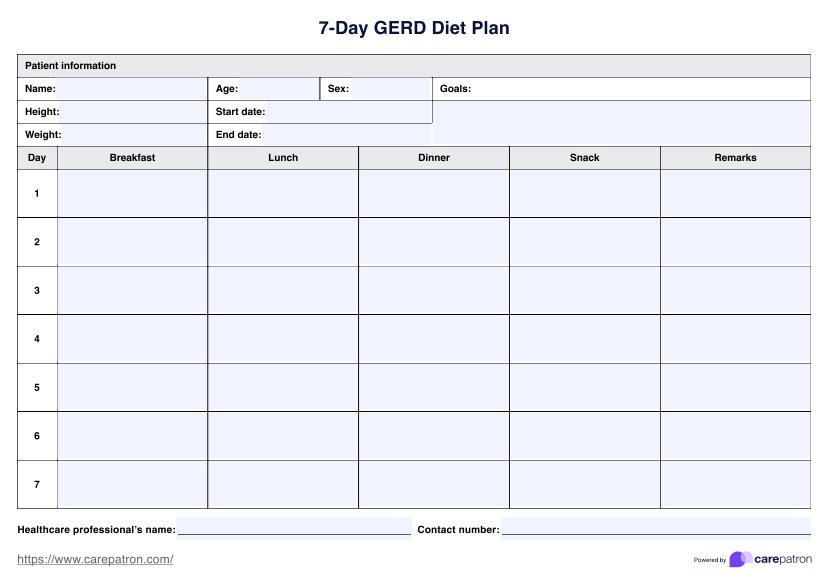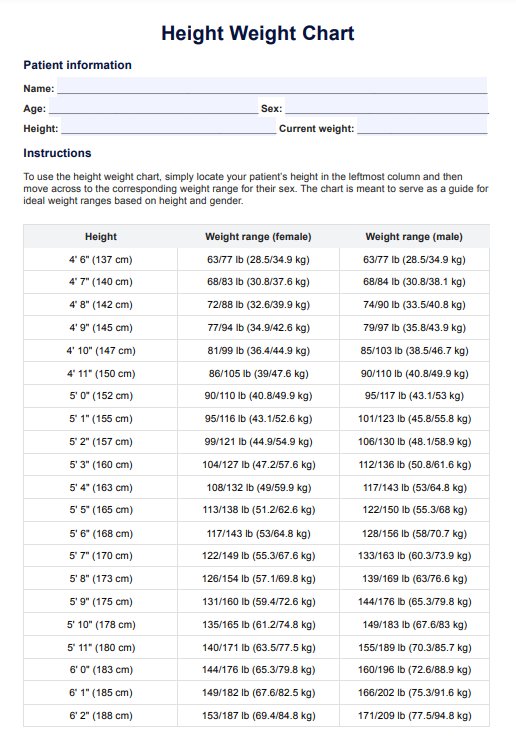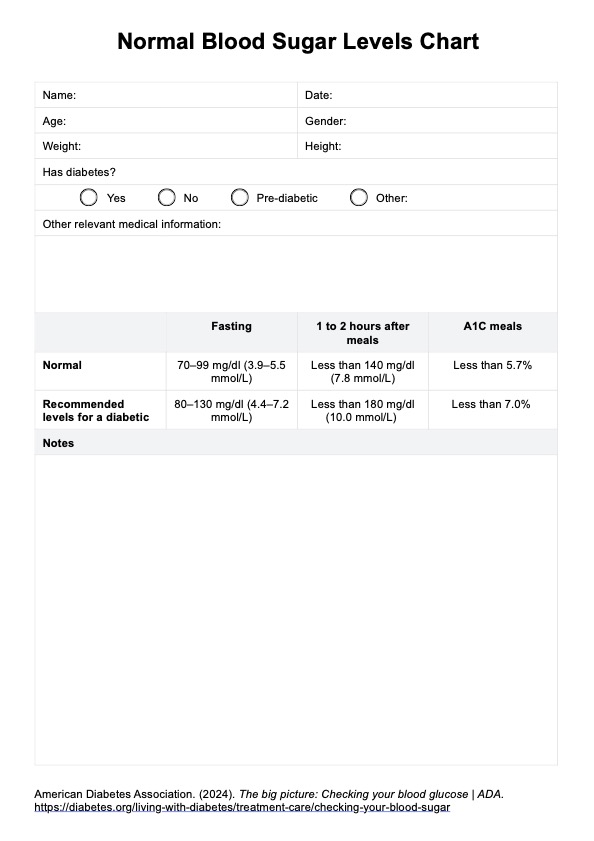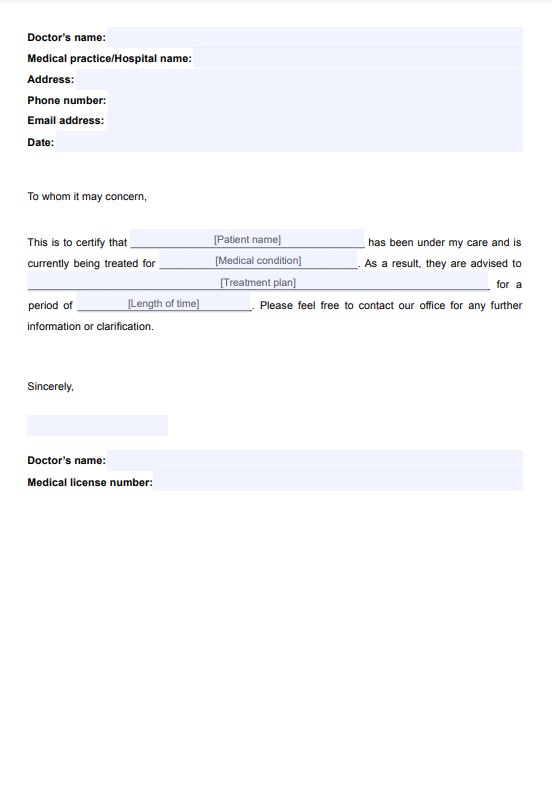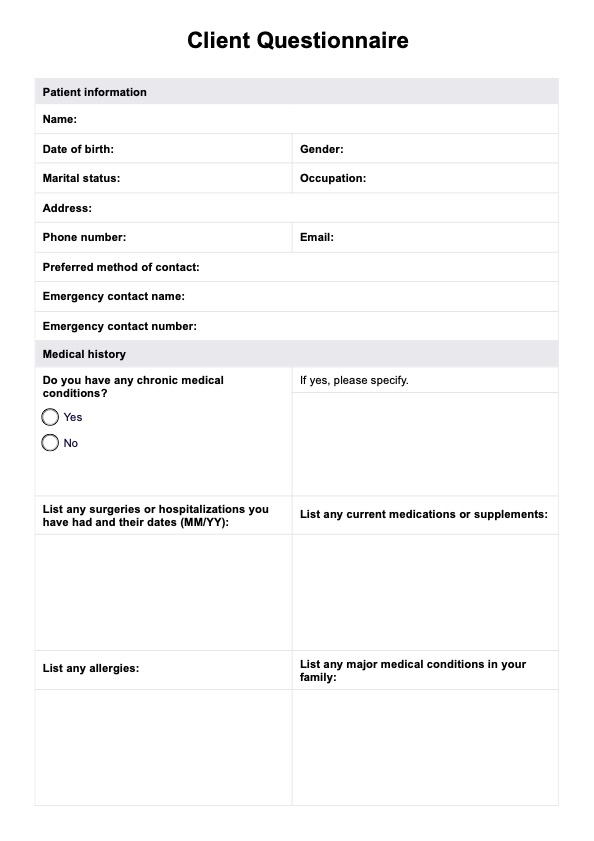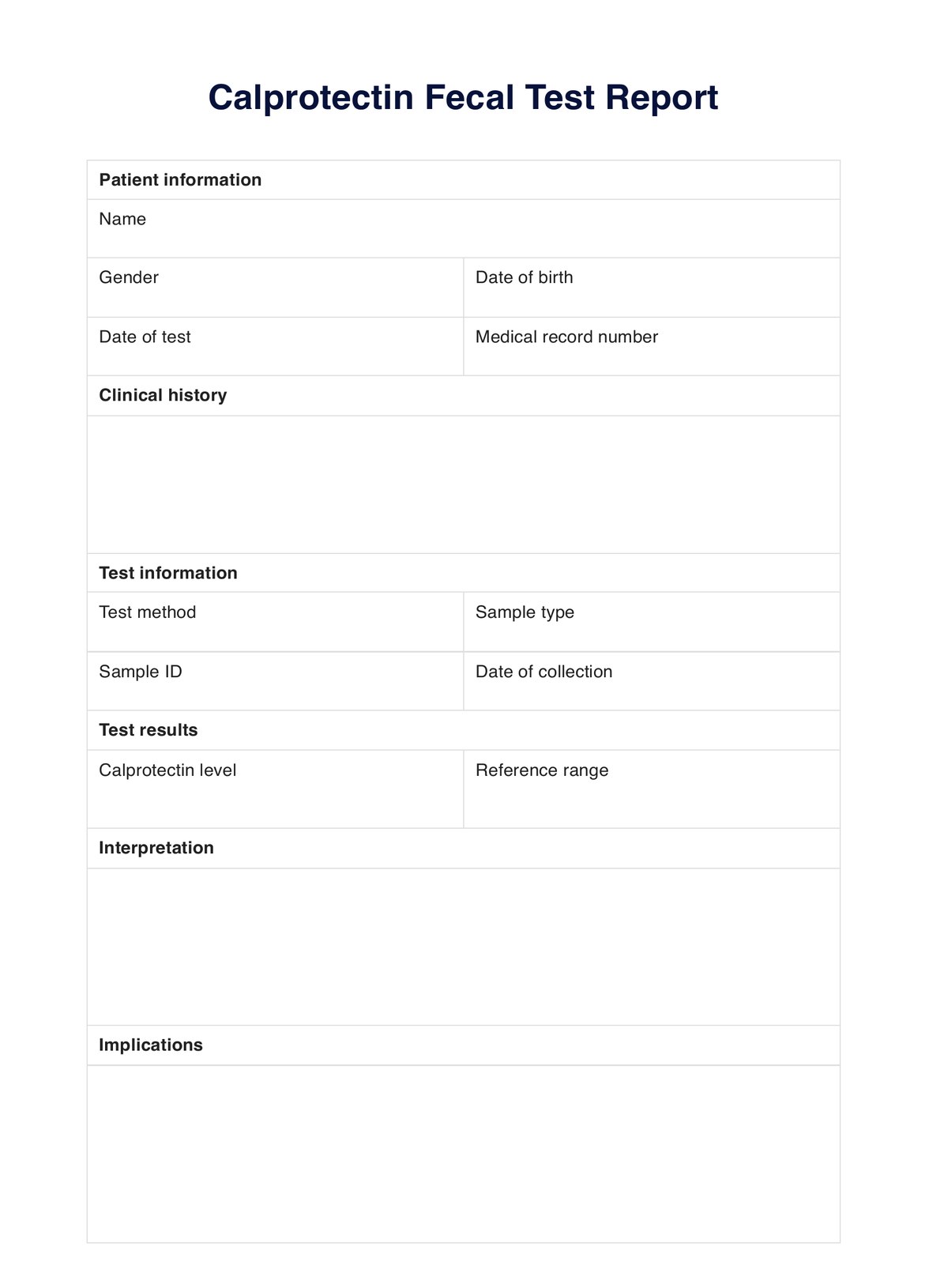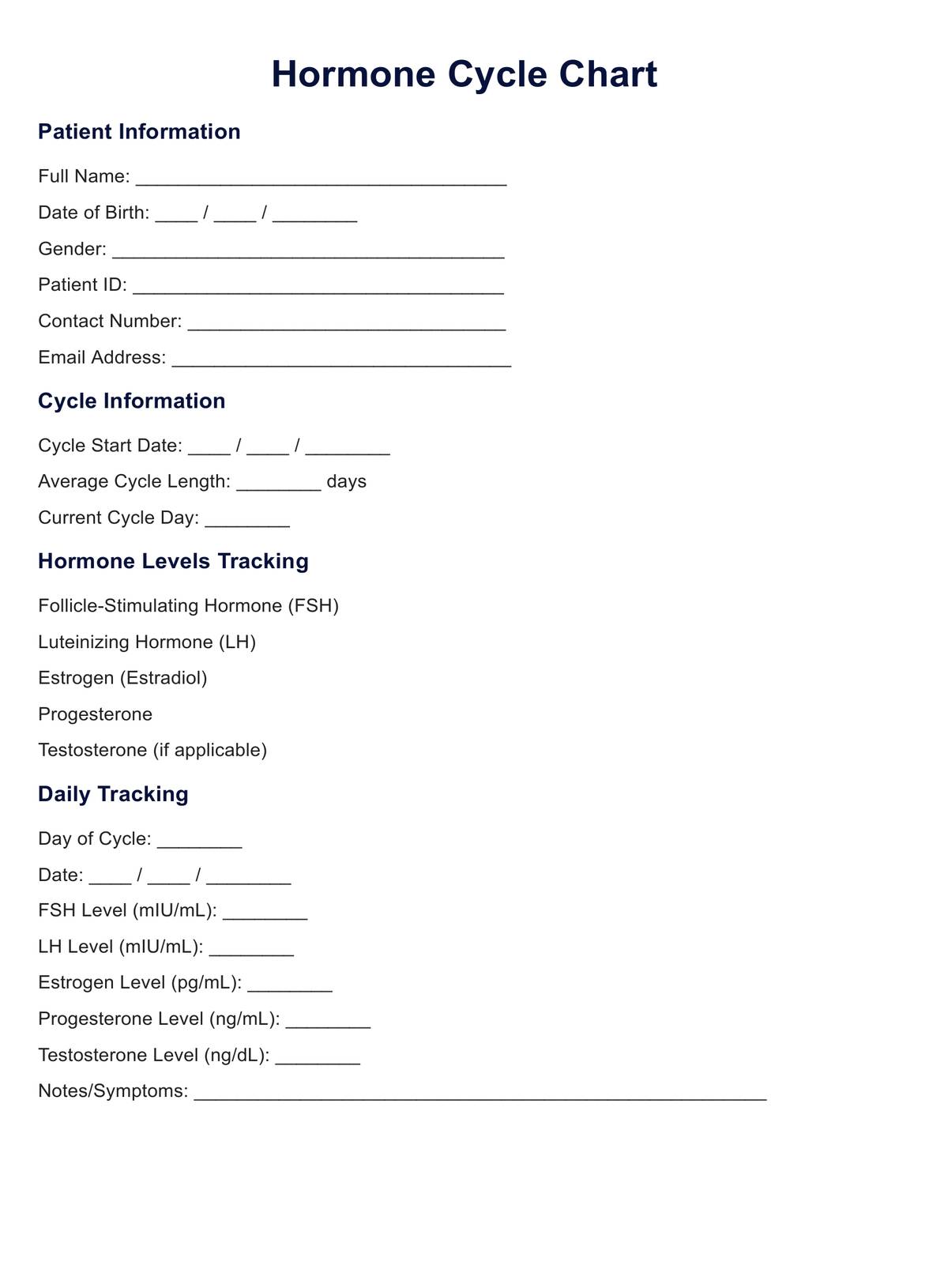Binge Eating Quiz
Use Carepatron's free Binge Eating Quiz PDF download to assess patient habits and easily identify, understand, and manage binge eating behaviors.


What is binge eating disorder?
Binge eating disorder is a common eating disorder characterized by recurring episodes of consuming a large amount of food in a short period, often accompanied by feelings of loss of control and distress (Iqbal & Rehman, 2022). Unlike bulimia, individuals with binge eating disorder do not regularly engage in compensatory behaviors like vomiting or excessive exercise.
It is officially recognized in the Diagnostic and Statistical Manual of Mental Disorders (DSM-5) and is considered the most common eating disorder in the United States (Berkman et al., 2015). This condition can significantly affect a person’s eating patterns, emotional well-being, and physical health. Early binge eating discovery and intervention by a mental health professional is crucial for improving outcomes and reducing long-term risks.
Symptoms
People who develop binge eating disorder typically experience recurring binge episodes where they eat unusually large quantities of food, often in secret, and feel unable to stop even when they are not physically hungry. These episodes are usually triggered by emotional distress, stress, or other underlying mental health disorders. Common symptoms include (National Institute of Diabetes and Digestive and Kidney Diseases, 2021):
- Eating much more rapidly than normal
- Eating until feeling uncomfortably full
- Eating large amounts of food when not hungry
- Eating alone due to embarrassment about food quantity
- Feeling disgusted, depressed, or guilty after overeating
These symptoms can lead to disordered eating habits and often contribute to low self-esteem and body dissatisfaction.
Risks
Binge eating disorder carries serious health and psychological risks (Dennis, 2024). Physically, it can lead to obesity, high blood pressure, type 2 diabetes, high cholesterol, digestive and kidney diseases, and other complications. The condition also has strong associations with other mental disorders, including depression, anxiety, and substance use disorders. People with binge eating disorders are at increased risk for kidney diseases due to long-term metabolic strain and poor nutrition.
Behavioral risk factors include a history of restrictive dieting, low self-esteem, trauma, and a family history of mental health disorders or eating habits marked by emotional coping mechanisms. Social and environmental stressors may also contribute to compulsive eating behaviors.
Treatment
Treating binge eating disorder typically involves a comprehensive, multidisciplinary approach. Working with a mental health professional is essential to address the psychological aspects of the disorder. Cognitive Behavioral Therapy (CBT) is one of the most effective treatment modalities and helps individuals identify and change negative thoughts and behaviors surrounding food and body image (National Health Service, 2021).
Other treatment options include:
- Interpersonal therapy (IPT) to improve relationship-related stress
- Dialectical behavior therapy (DBT) to manage emotional dysregulation
- Nutritional counseling to restore balanced eating patterns
- Medication such as antidepressants or FDA-approved treatments for BED
Support groups and lifestyle interventions also play a critical role in long-term recovery. Early intervention improves outcomes, especially when binge eating discovery is made through clinical screening and consistent follow-up by healthcare teams.
Binge Eating Quiz Template
Binge Eating Quiz Example
What is a Binge Eating Quiz?
While there is no official Binge Eating Quiz, Carepatron's Binge Eating Quiz is based on the Binge Eating Scale (BES). The BES, developed by Gormally et al. (1982), is a validated self-assessment quiz designed to identify behavioral patterns and psychological indicators associated with binge eating disorder. Although this is not a formal diagnosis, this tool is commonly used by healthcare professionals to screen for binge eating disorders and support clinical decision-making.
The quiz consists of 16 items, each presenting a graded severity of symptoms related to binge eating episodes, emotional distress, and disordered perceptions of body shape and weight. It is often used as an initial binge eating disorder test or eating disorder test to measure the likelihood and severity of binge eating behaviors.
How does it work?
The Binge Eating Quiz template by Carepatron is designed for seamless integration into clinical workflows. It supports healthcare professionals in identifying potential binge eating behaviors and inform the next treatment steps. The straightforward process can be efficiently implemented during routine assessments or specialized consultations.
Step 1: Access the template
Click the “Use template” button on this page to get started. You’ll be directed to download the Carepatron app, where the Binge Eating Quiz template will be immediately available for use. This ensures you can quickly integrate the tool into your assessment process without navigating multiple steps.
Step 2: Use the template in patient assessment
Once opened in Carepatron, the template can be completed digitally during a patient consultation. It allows for accurate, real-time data capture, helping clinicians assess eating behaviors, emotional triggers, and severity indicators associated with binge eating disorder.
Step 3: Conduct a test on patient
Guide the patient through the quiz, encouraging honest responses to each question. The Binge Eating Quiz uses structured, scenario-based items to reflect the behavioral and emotional aspects of binge eating, making it a reliable tool for identifying patterns aligned with clinical symptoms.
Step 4: Gather and interpret data
After completing the quiz, Carepatron automatically compiles the patient’s responses into a total score. This score helps determine the severity of binge eating behaviors, aiding clinical judgment on whether further evaluation, formal diagnosis, or immediate intervention is warranted.
Step 5: Discuss results and next steps with patient
Review the results with the patient in a sensitive, informed manner. Use the findings to guide discussions around treatment pathways such as therapy, nutrition counseling, or referral to a mental health professional, ensuring alignment with the patient’s specific needs and clinical presentation.
Benefits of using this template
Using the Binge Eating Quiz template in Carepatron streamlines the assessment process for healthcare professionals by providing a structured, clinically validated tool that can be quickly administered and scored. It eliminates the need for manual paperwork and allows for efficient documentation and data tracking directly within the Carepatron platform.
The digital format ensures consistent application of the Binge Eating Scale (BES), reducing scoring errors and promoting accuracy in identifying the severity of binge eating behaviors. This supports early intervention and helps inform treatment planning, referrals, or follow-up strategies. The template also improves workflow efficiency by integrating seamlessly with patient records, making it easier to review historical data, track progress, and collaborate with multidisciplinary teams.
Scoring and interpretation
The Binge Eating Quiz is based on the Binge Eating Scale (BES), a 16-item self-report tool that quantifies the severity of binge eating behaviors. Each item includes 3 to 4 statements, increasing the severity of emotional, cognitive, and behavioral symptoms. Respondents select the one statement that best reflects their experience, and each selection is assigned a score from 0 to 3 points—0 indicating no severity and 3 indicating the most severe symptoms.
The total score is calculated by summing the individual item scores, resulting in a possible range from 0 to 46 points. Interpretation is categorized into three clinical levels:
- 0–17 (Non-binge eater): Suggests minimal or no signs of binge eating.
- 18–26 (Moderate binge eater): Indicates a probable presence of binge eating disorder.
- 27–46 (Severe binge eater): Strongly suggests clinical binge eating disorder and the need for intervention.
References
Berkman, N. D., Brownley, K. A., Peat, C. M., Lohr, K. N., Cullen, K. E., Morgan, L. C., Bann, C. M., Wallace, I. F., & Bulik, C. M. (2015, December 1). Table 1, DSM-IV and DSM-5 diagnostic criteria for binge-eating disorder. In Treatment of binge eating disorder in adults: A systematic review. Agency for Healthcare Research and Quality (US). https://www.ncbi.nlm.nih.gov/books/NBK338301/table/introduction.t1/
Dennis, A. B. (2024). Eating disorder risk factors. National Eating Disorders Association. https://www.nationaleatingdisorders.org/risk-factors/
Gormally, J., Black, S., Daston, S., & Rardin, D. (1982). The assessment of binge eating severity among obese persons. Addictive Behaviors, 7(1), 47–55. https://doi.org/10.1016/0306-4603(82)90024-7
Iqbal, A., & Rehman, A. (2022). Binge eating disorder. In StatPearls. StatPearls Publishing. https://www.ncbi.nlm.nih.gov/books/NBK551700/
National Institute of Diabetes and Digestive and Kidney Diseases. (2021, May). Symptoms & causes of binge eating disorder. National Institute of Diabetes and Digestive and Kidney Diseases. https://www.niddk.nih.gov/health-information/weight-management/binge-eating-disorder/symptoms-causes
National Health Service. (2021, February 12). Treatment – Binge eating disorder. NHS. https://www.nhs.uk/mental-health/conditions/binge-eating/treatment/
Commonly asked questions
Binge eating disorders can be initially screened using structured self-report tools such as the Binge Eating Scale (BES) or other standardized eating disorder tests. A mental health professional should follow up with a comprehensive clinical interview to confirm a diagnosis based on DSM-5 criteria.
Binge eating involves consuming an unusually large amount of food in a short period, accompanied by a sense of loss of control or overeating. It often includes emotional distress, such as guilt, and occurs without physical hunger.
The DSM-5 defines binge eating disorder as recurrent binge episodes (at least once per week for three months) marked by eating rapidly, eating until uncomfortably full, or eating alone due to shame. The episodes must cause significant distress and are not followed by purging behaviors.
Managing binge urges often requires structured treatment such as cognitive behavioral therapy, nutrition counseling, and emotional regulation strategies. Long-term support from a mental health professional is essential to address underlying triggers and build healthier eating patterns.


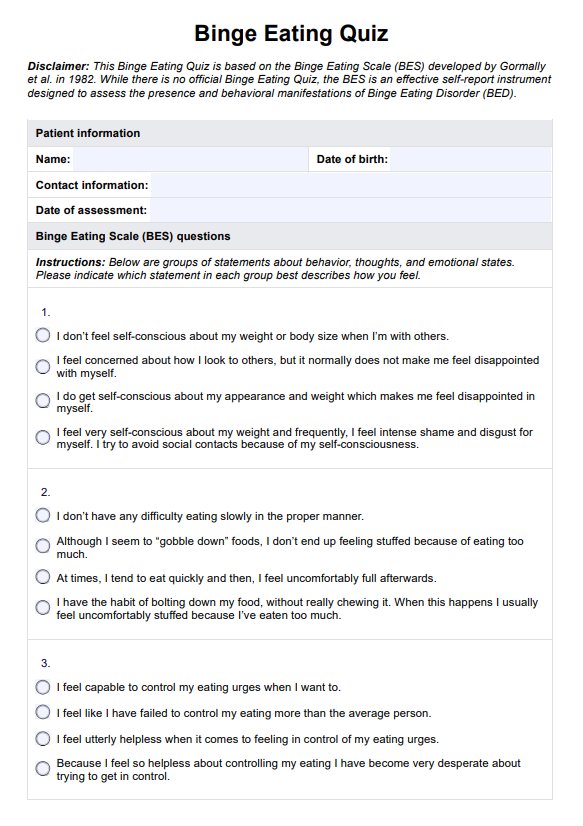
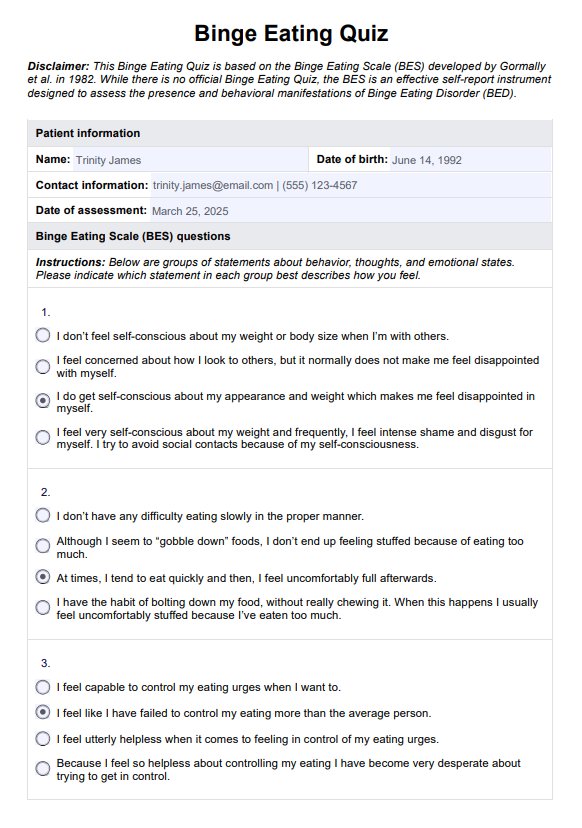

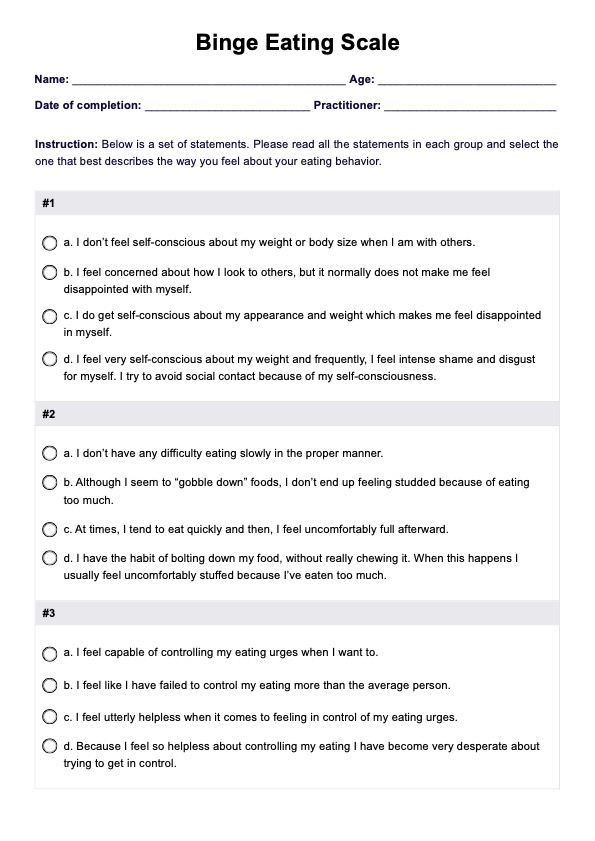
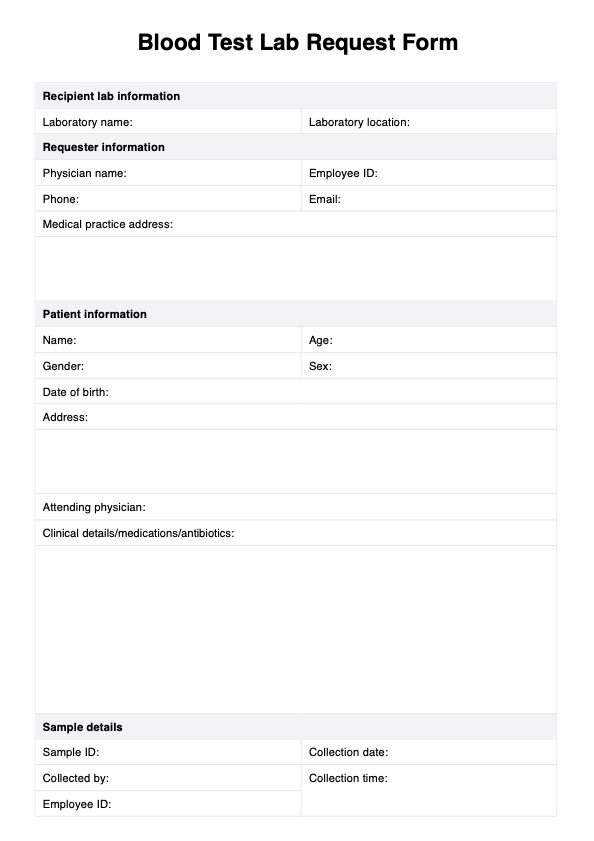
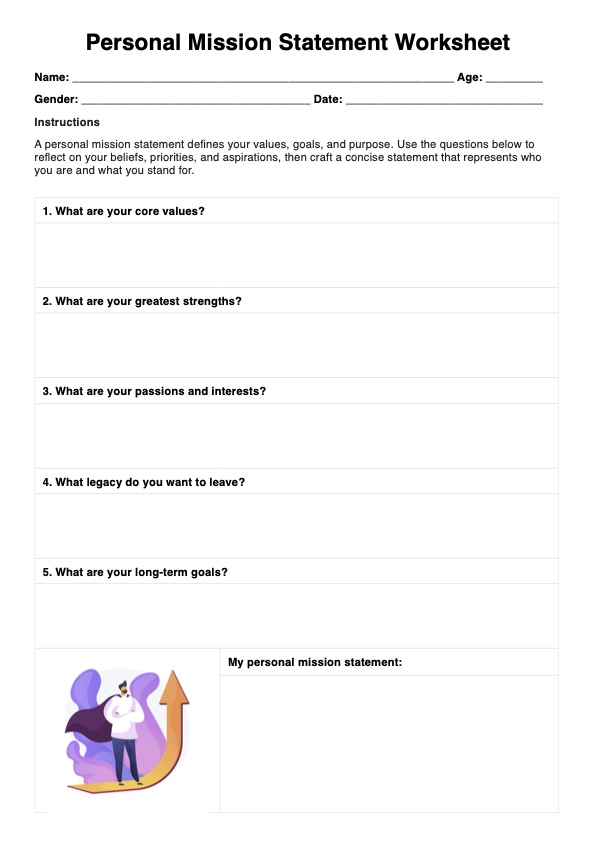
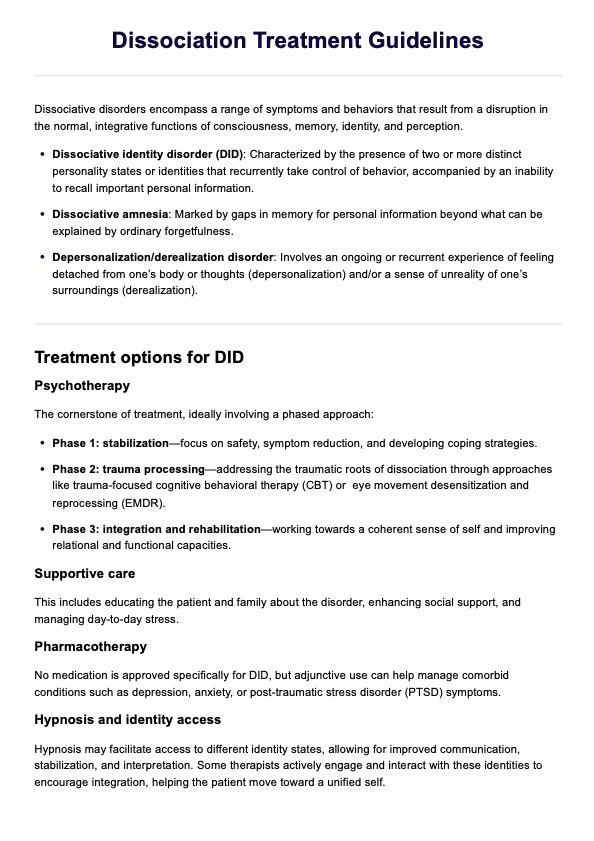


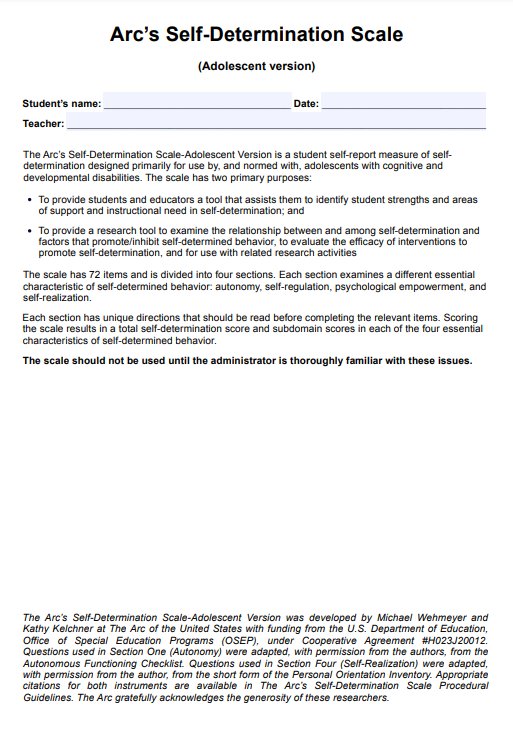
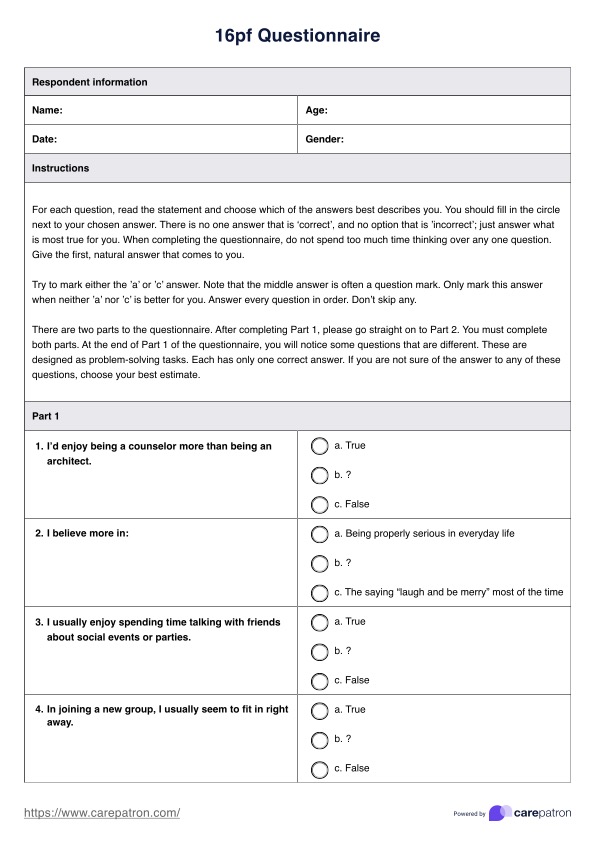

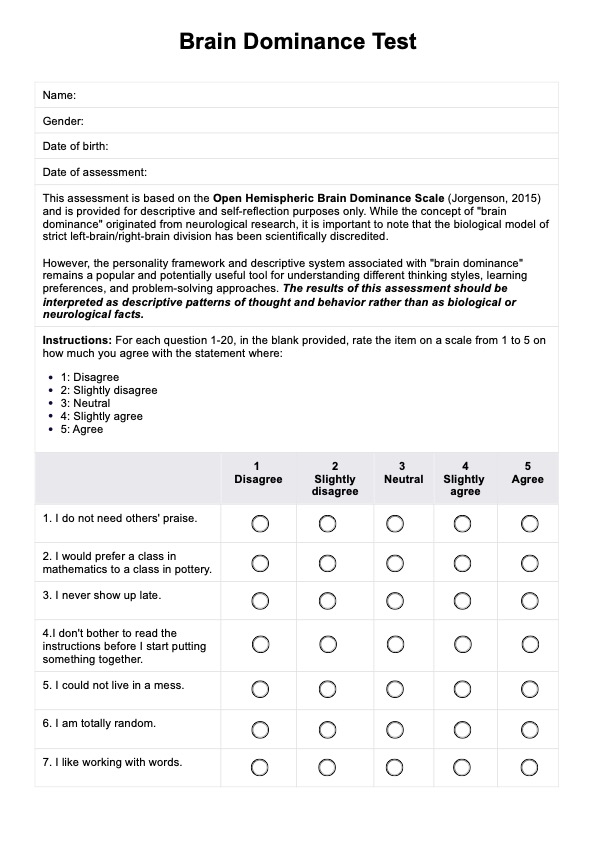
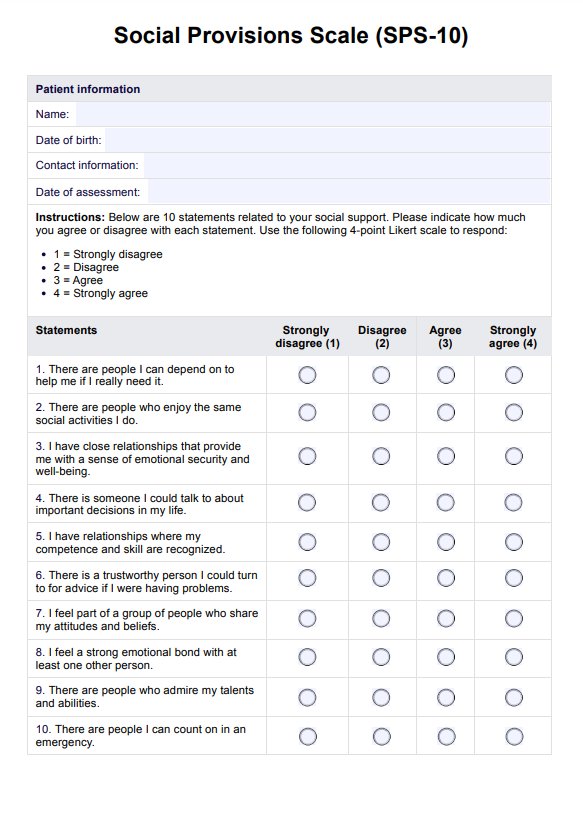

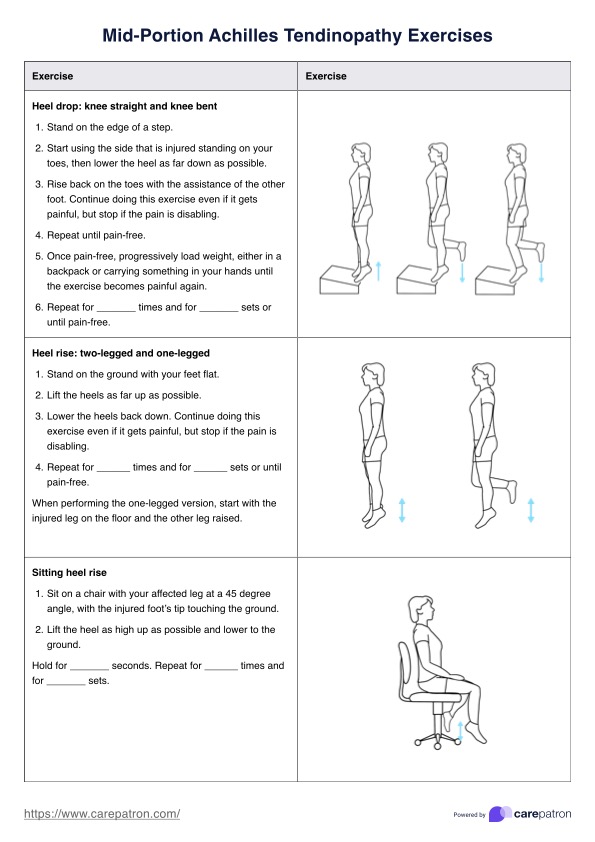

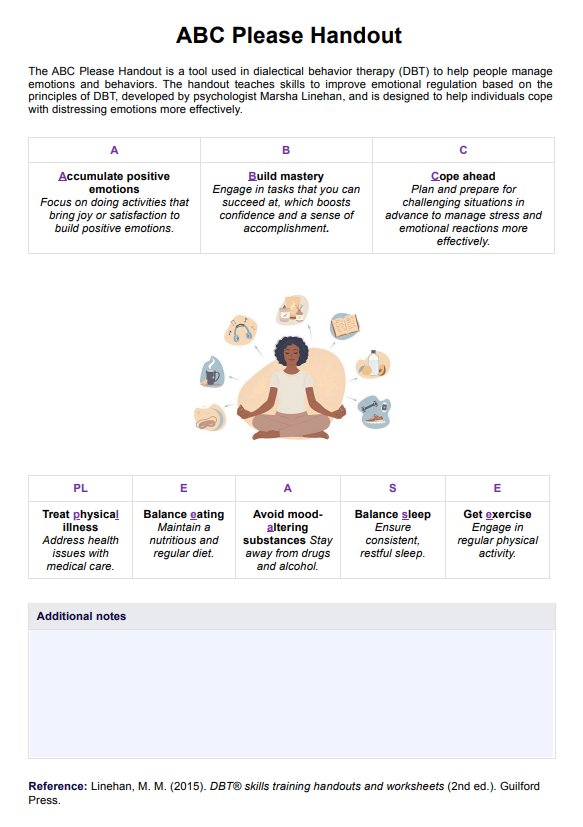
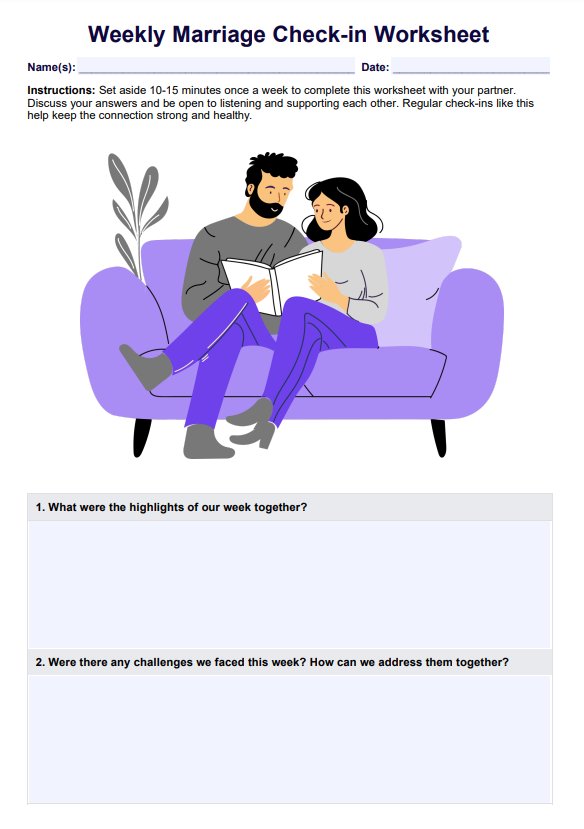
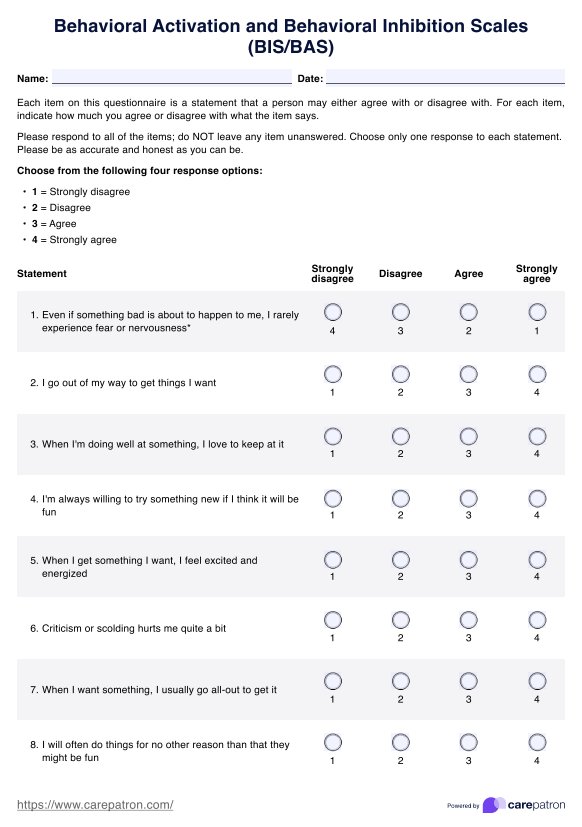
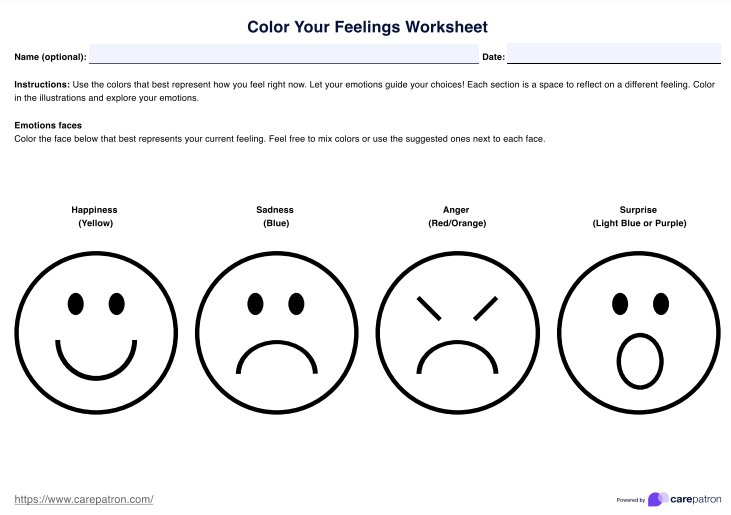
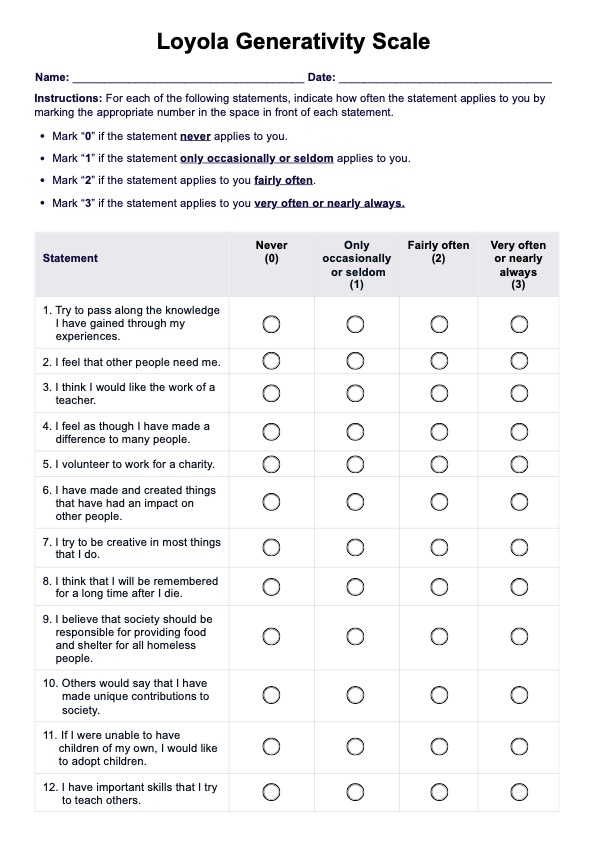
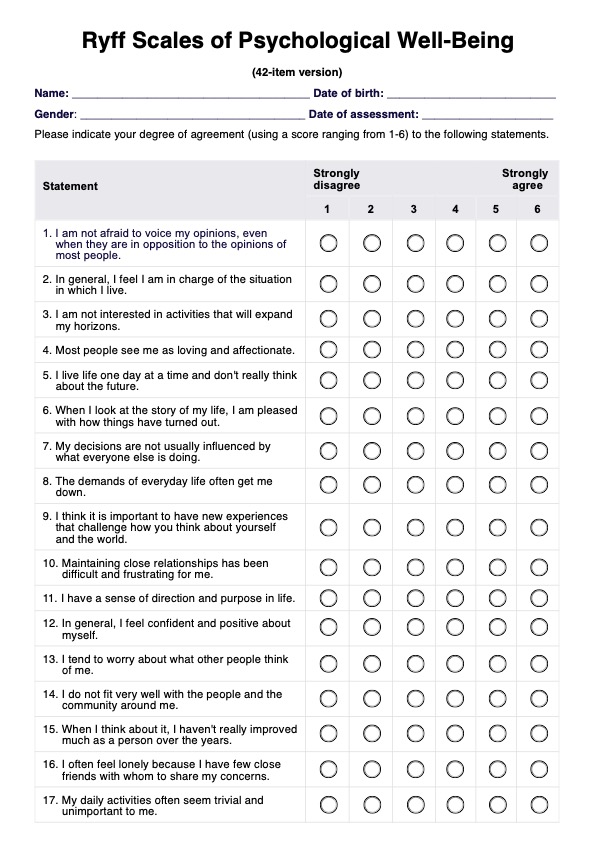
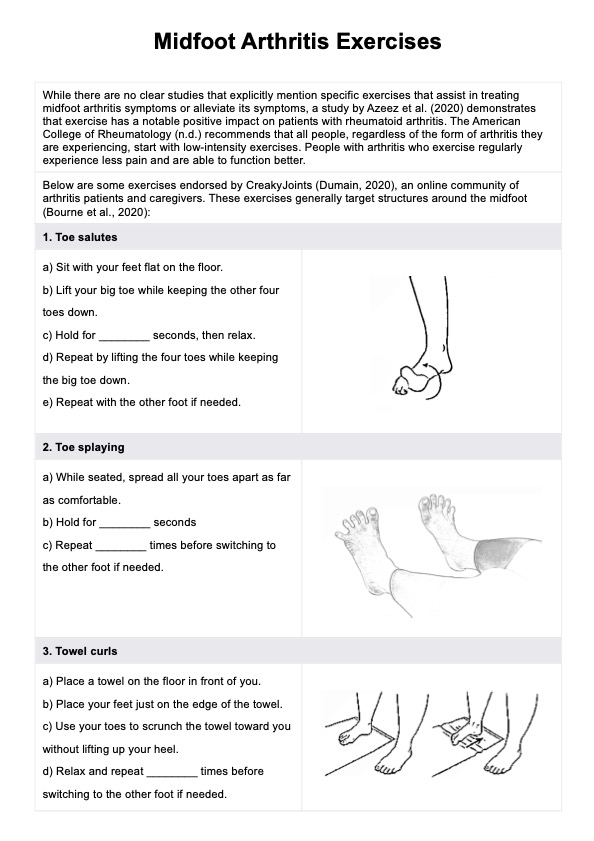
-template.jpg)
